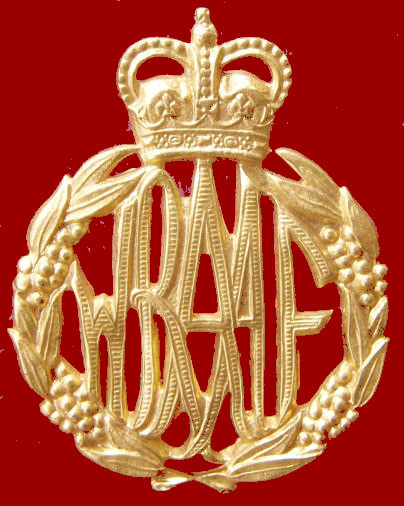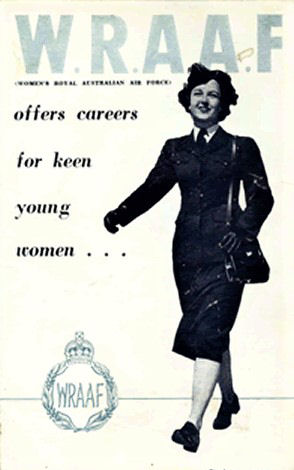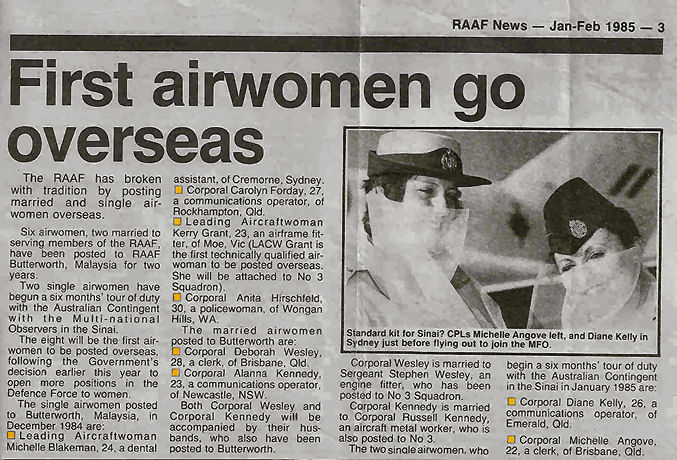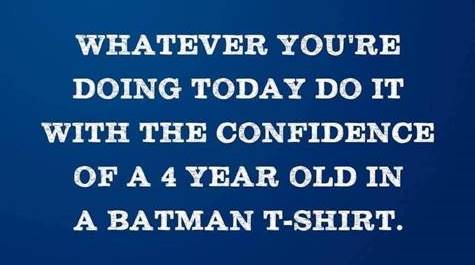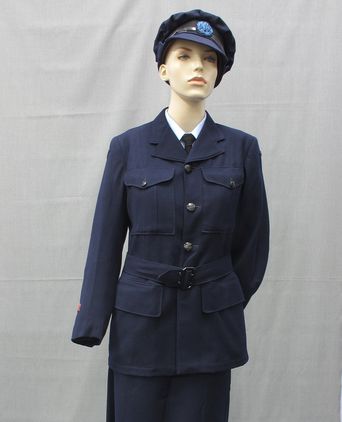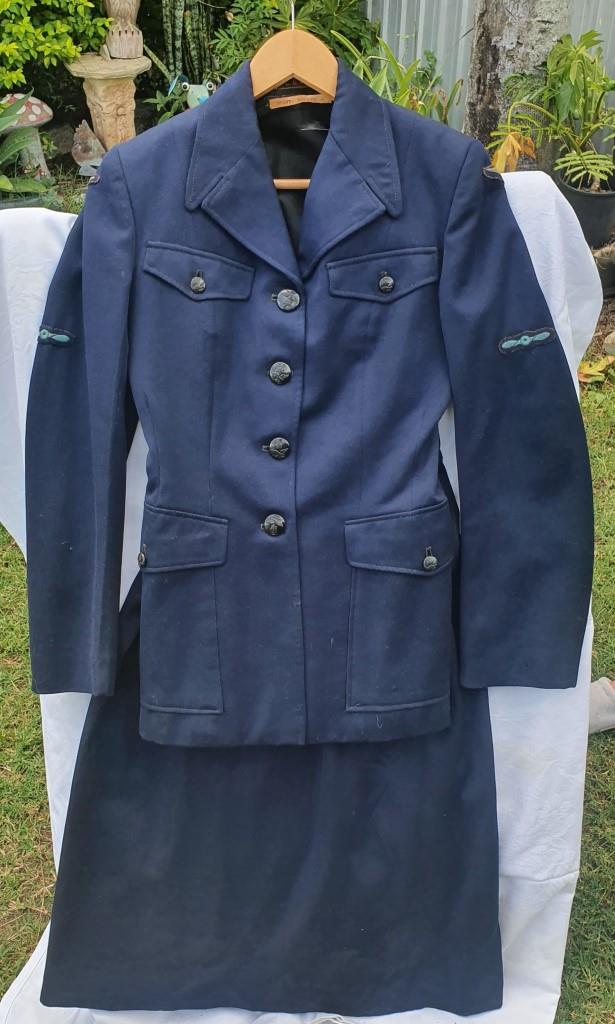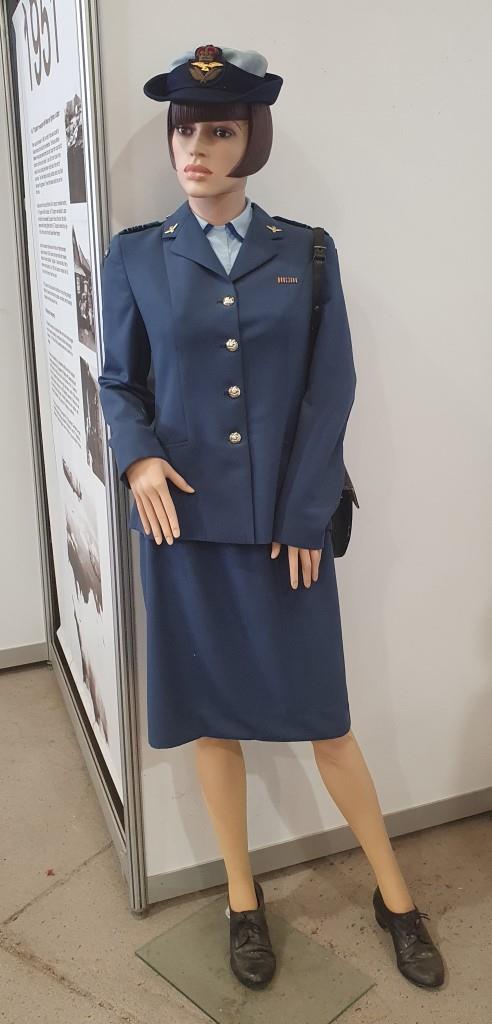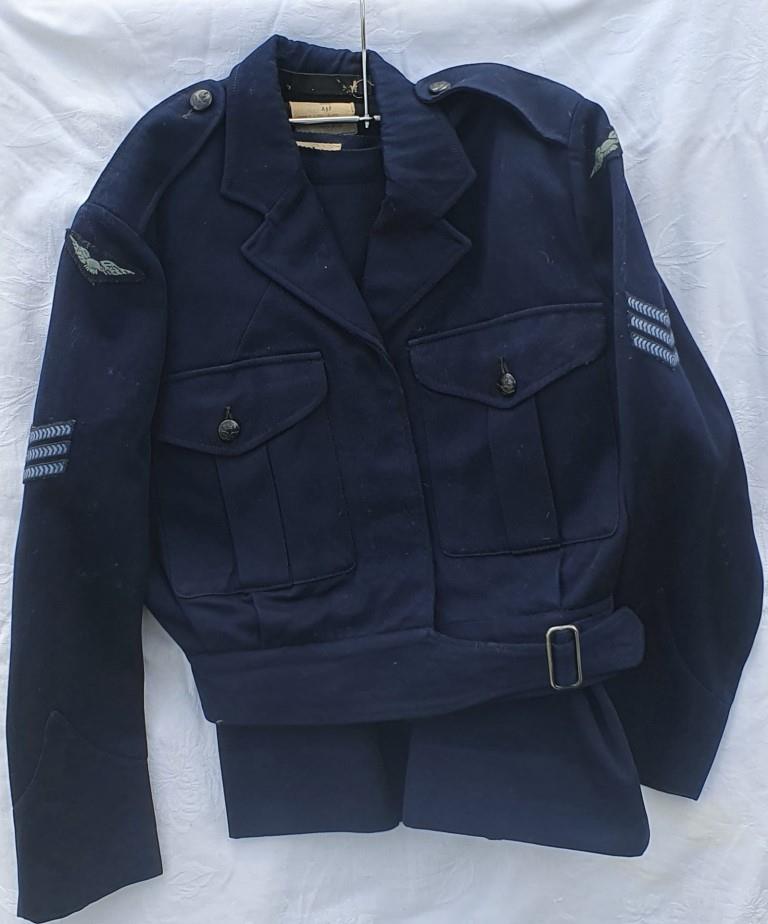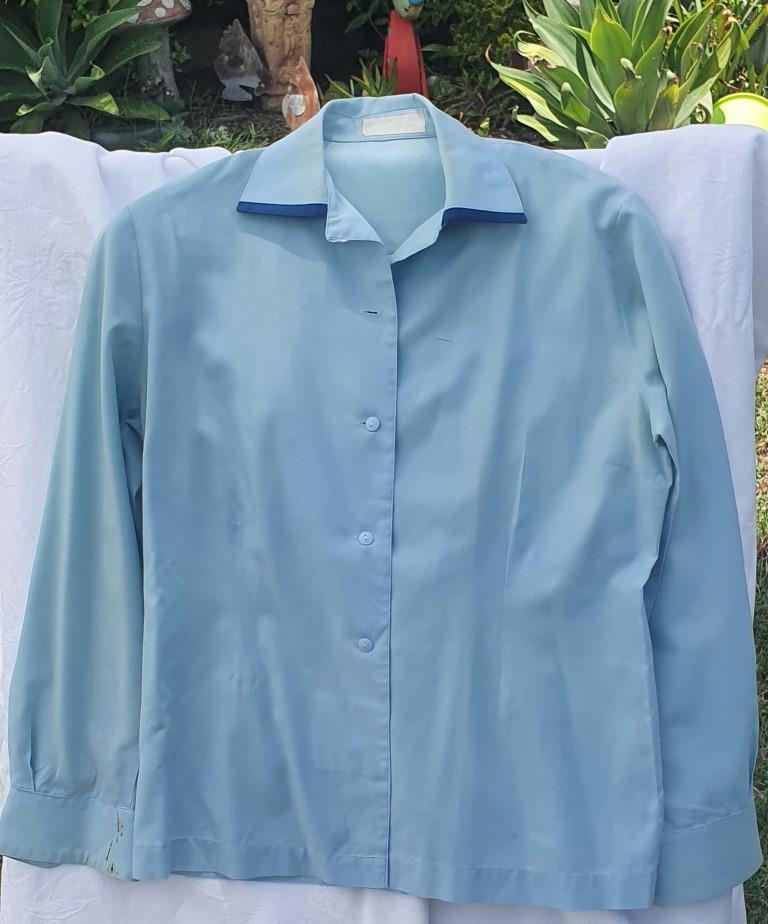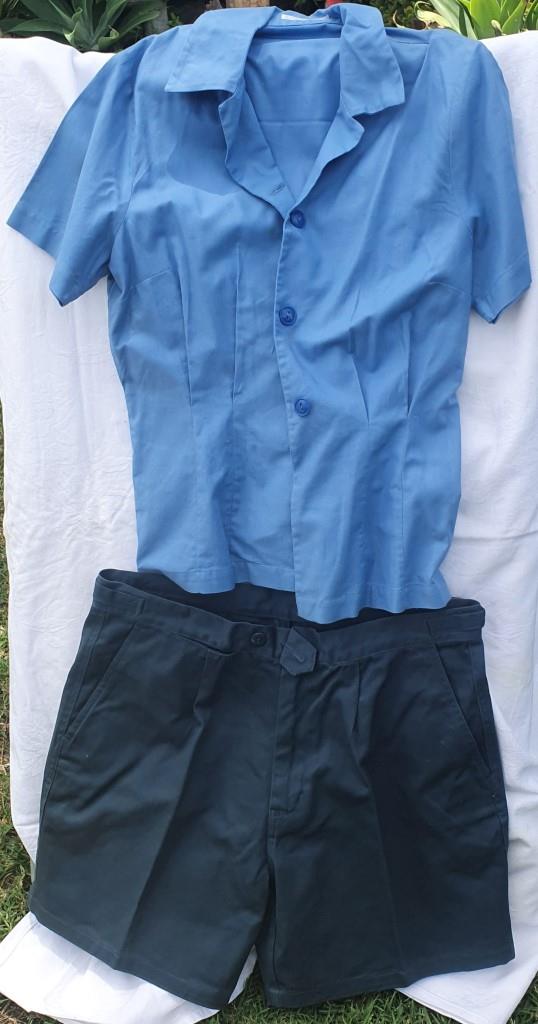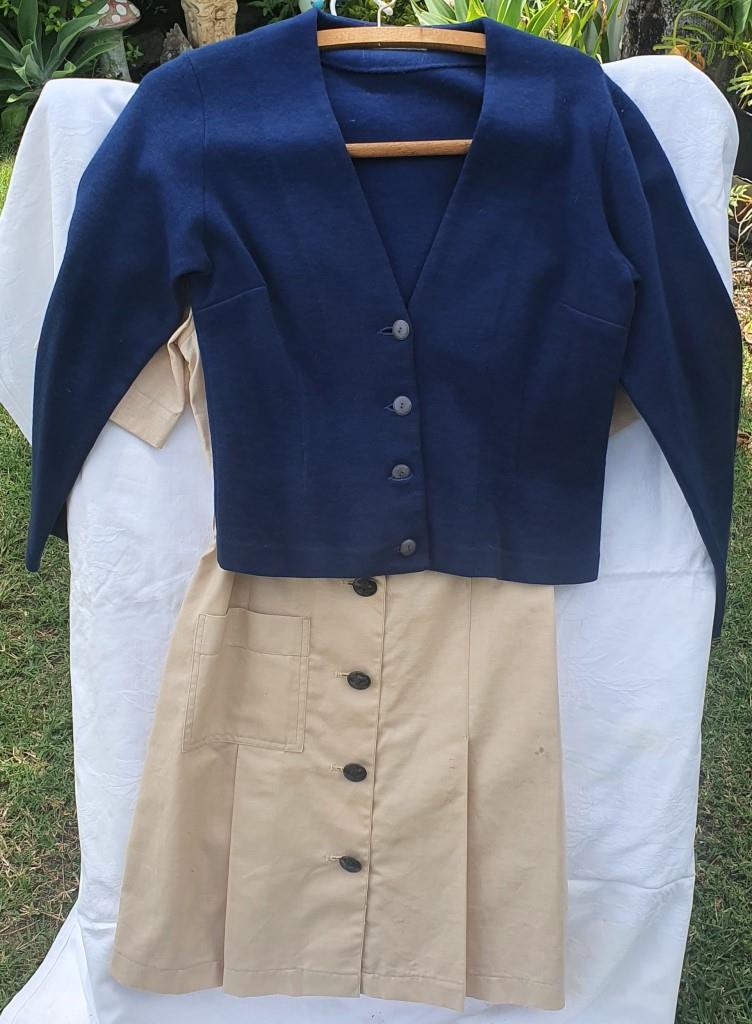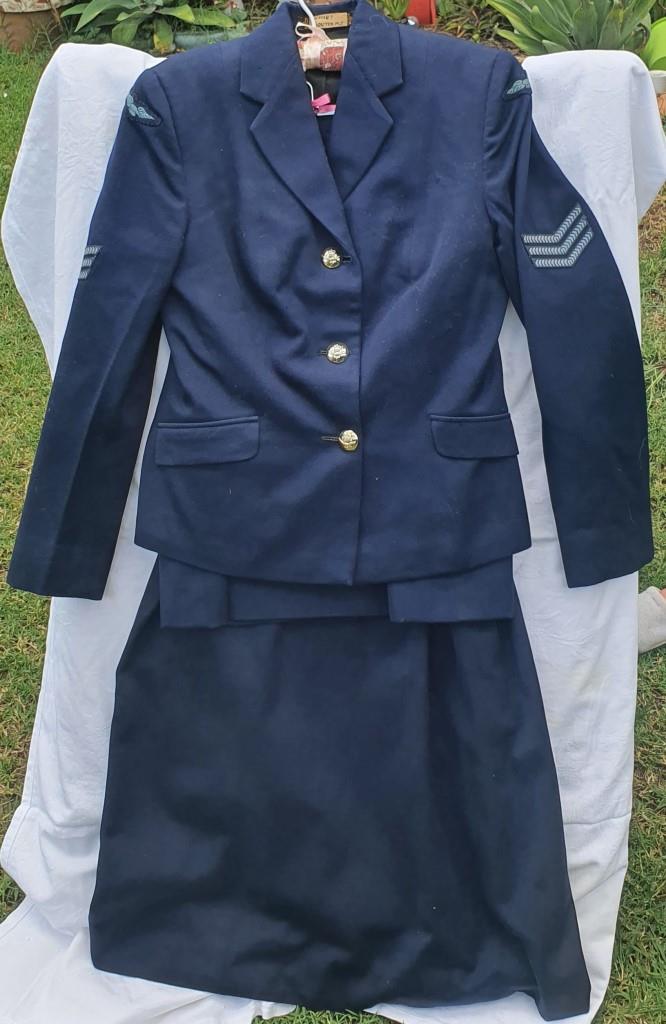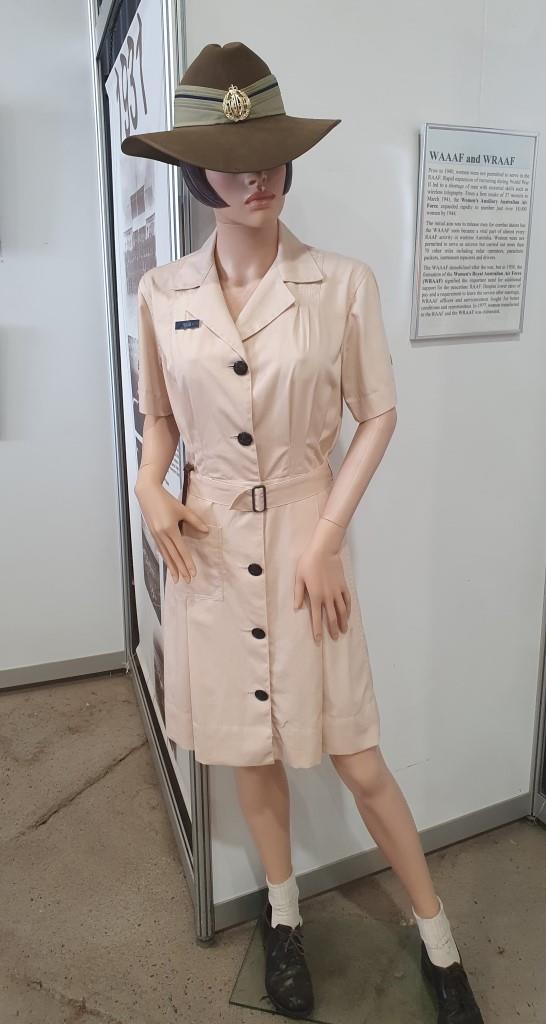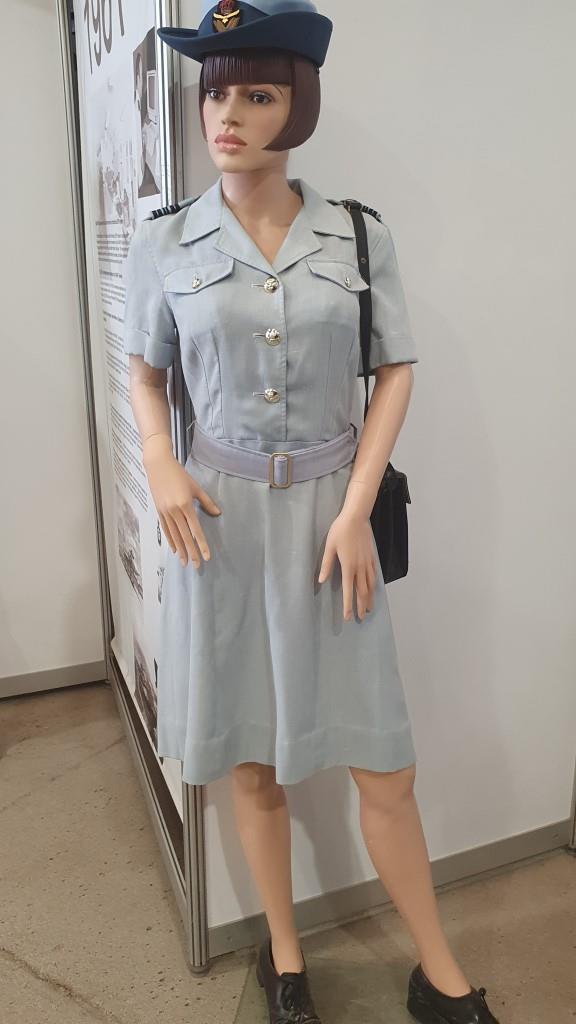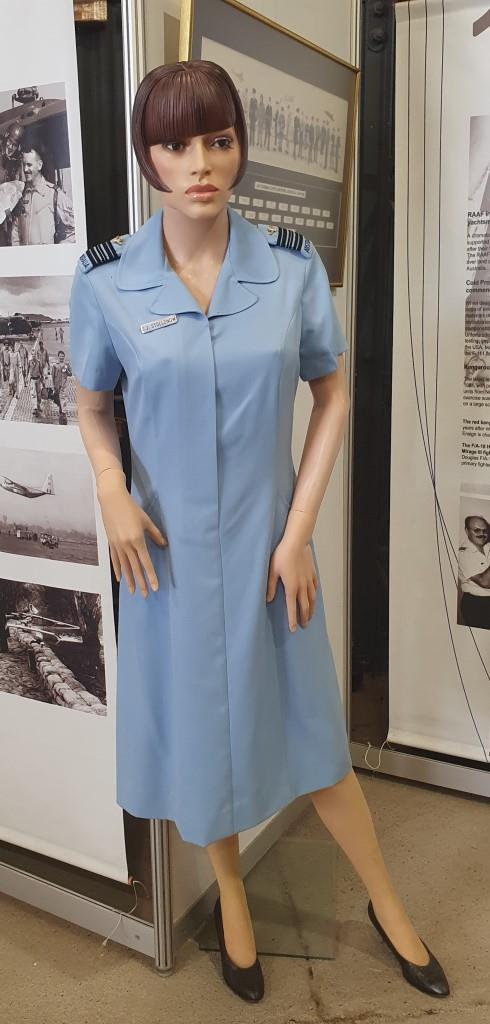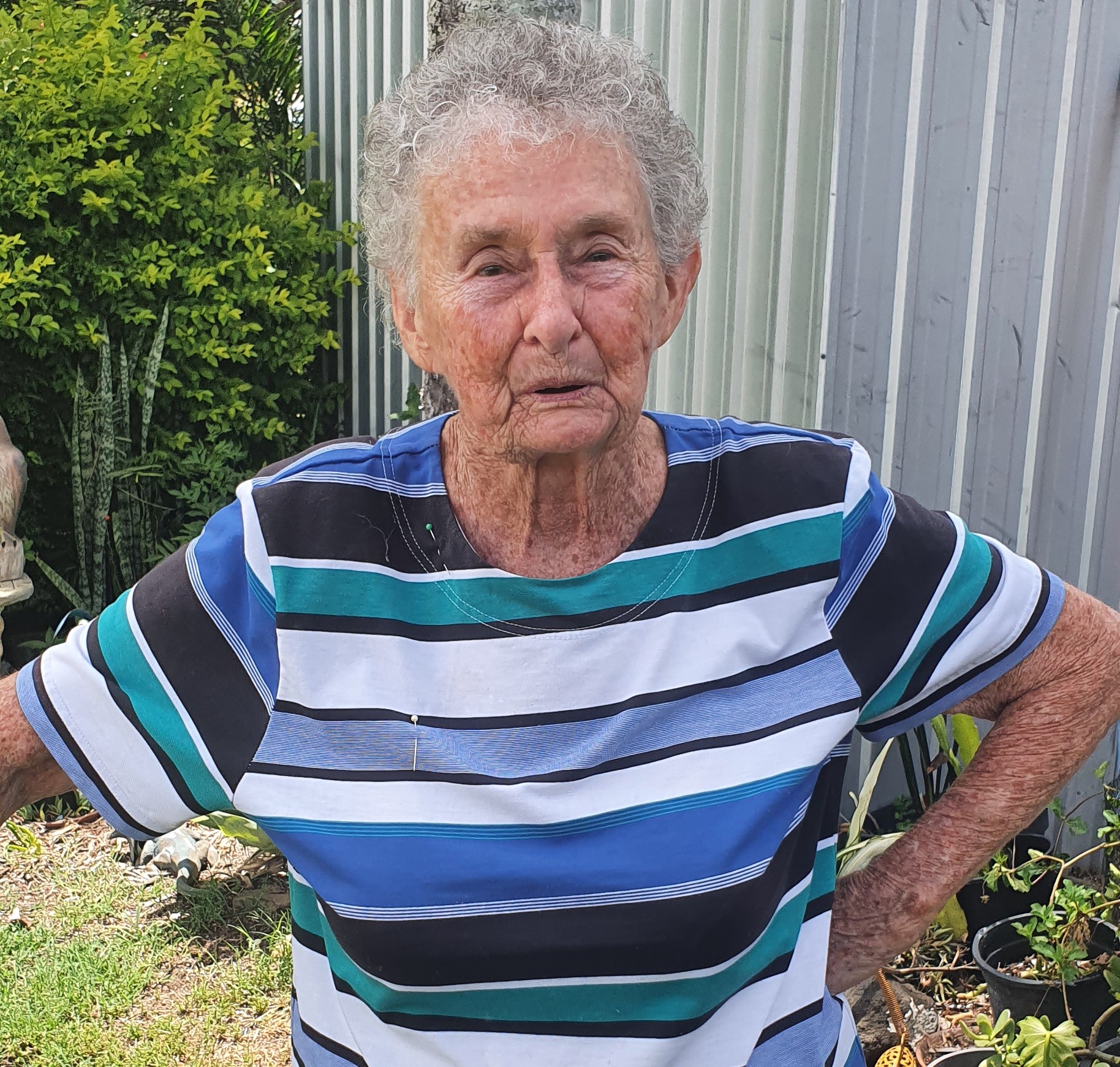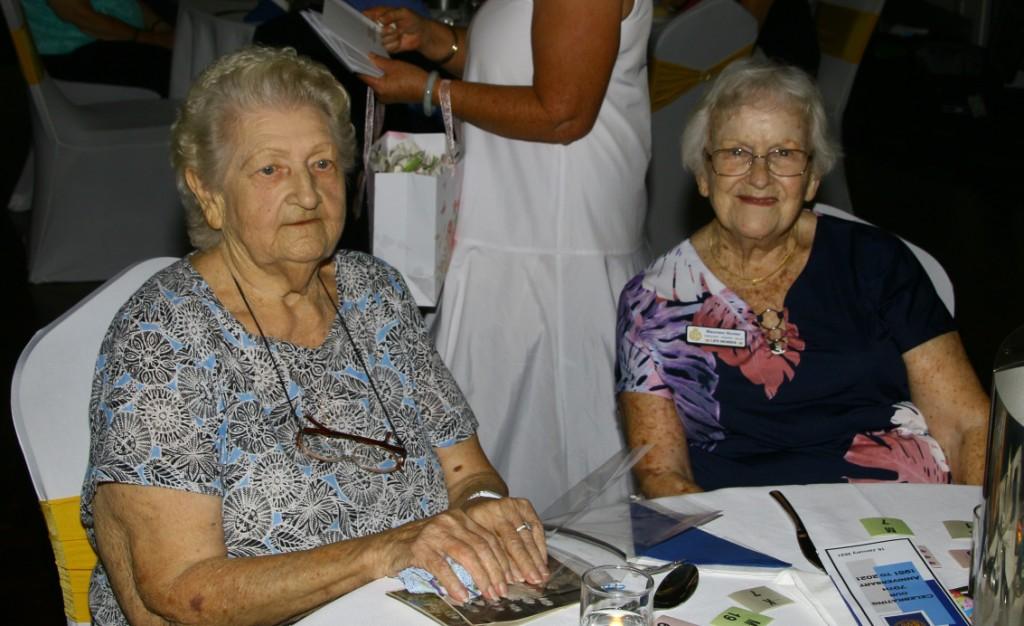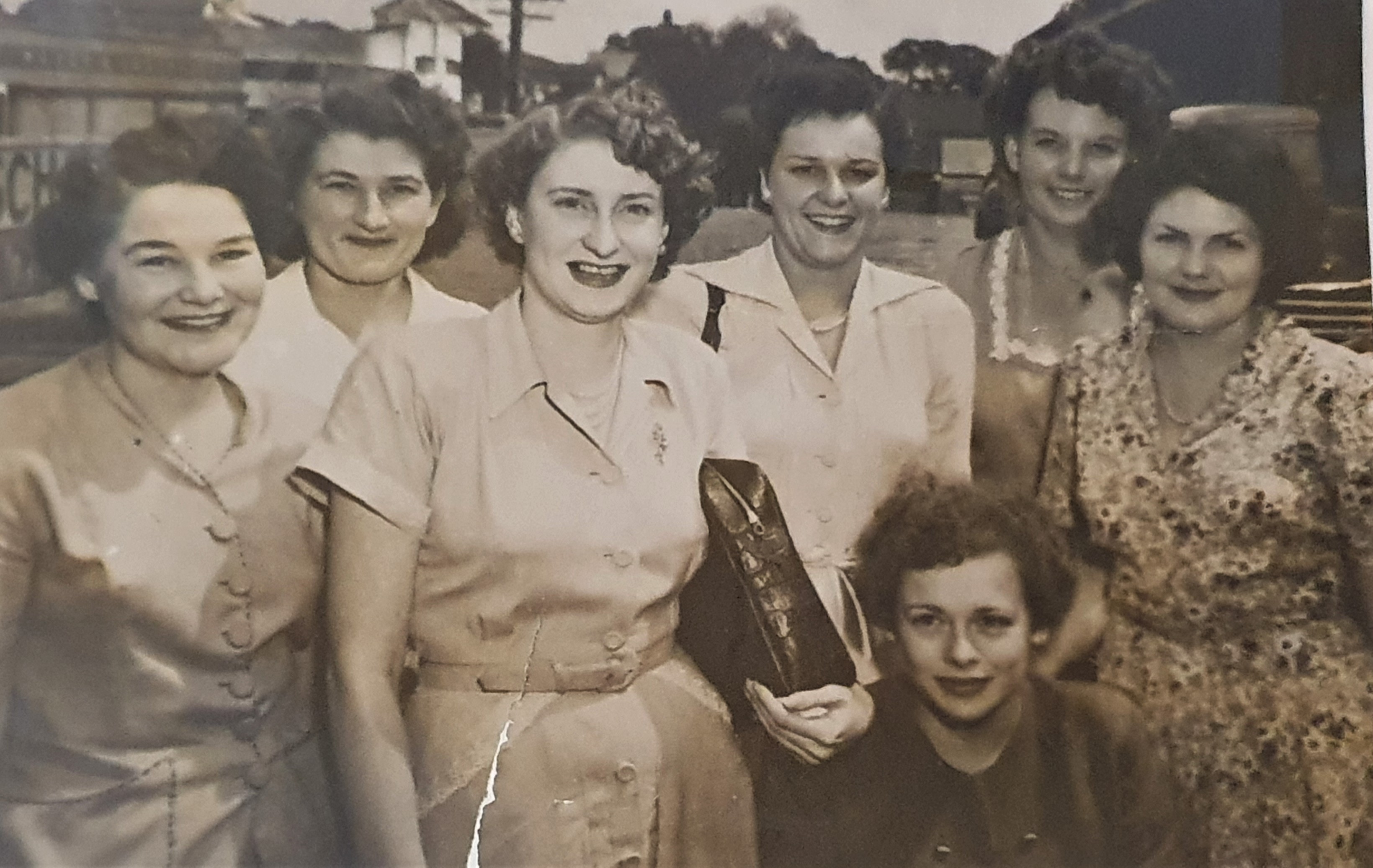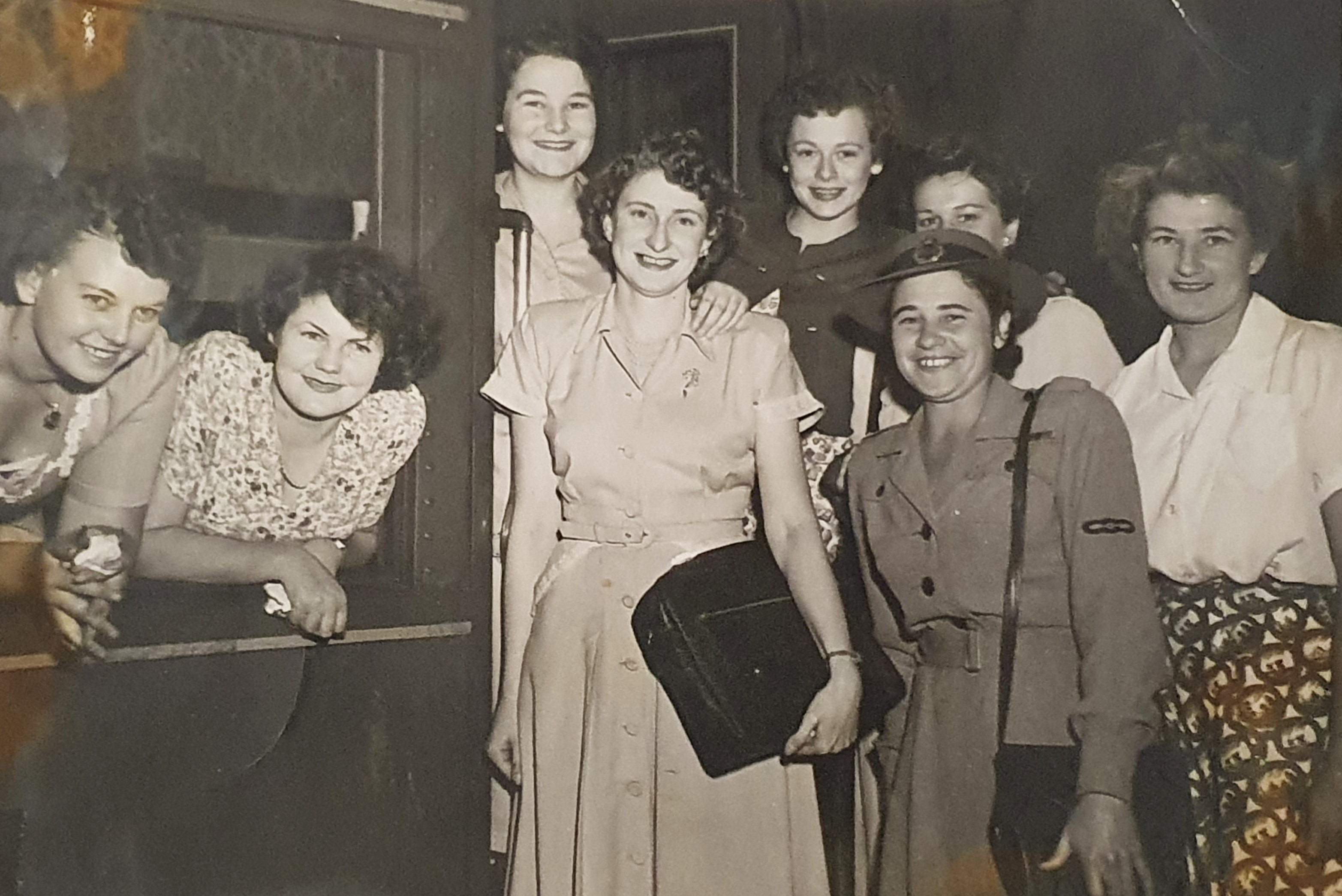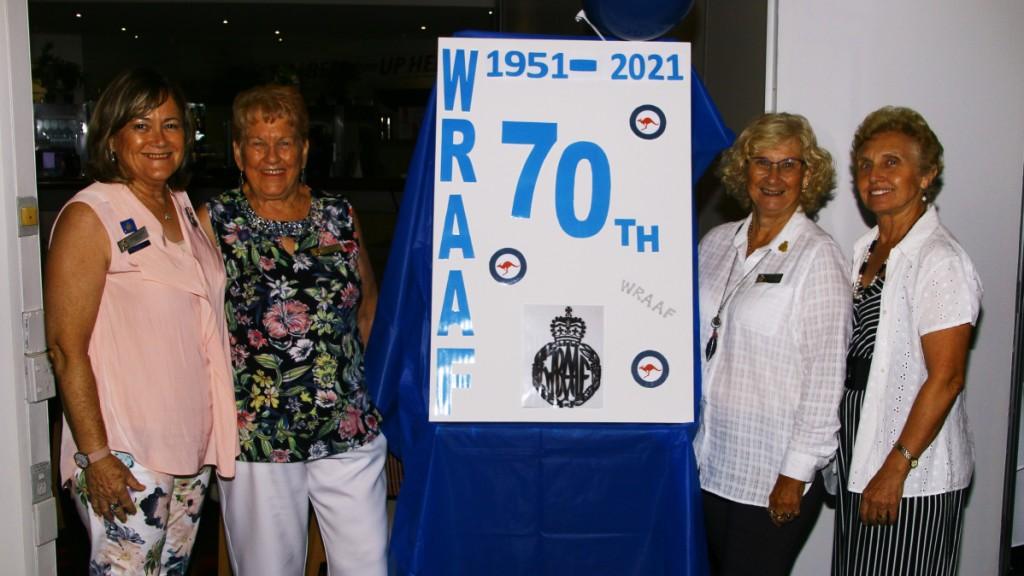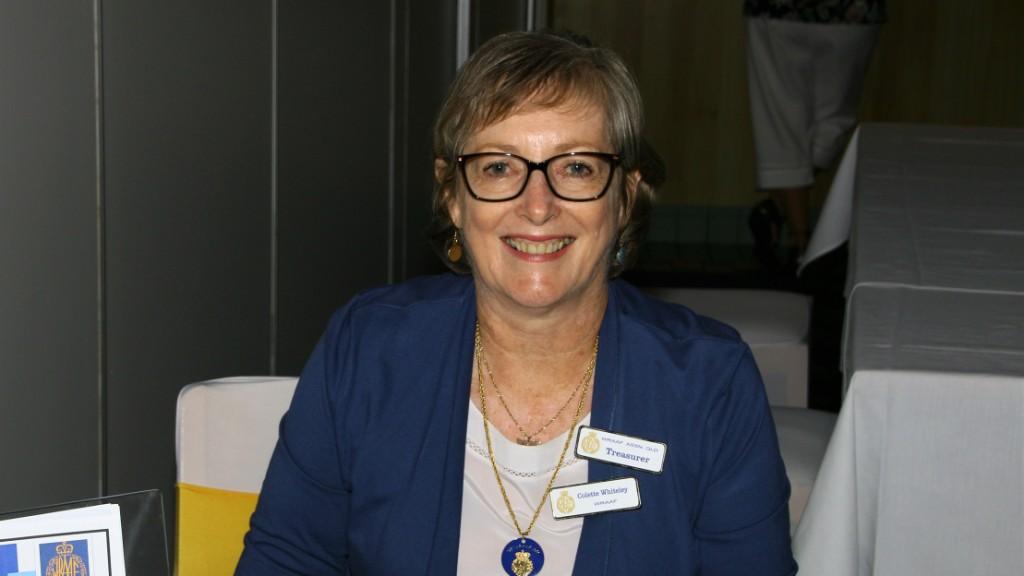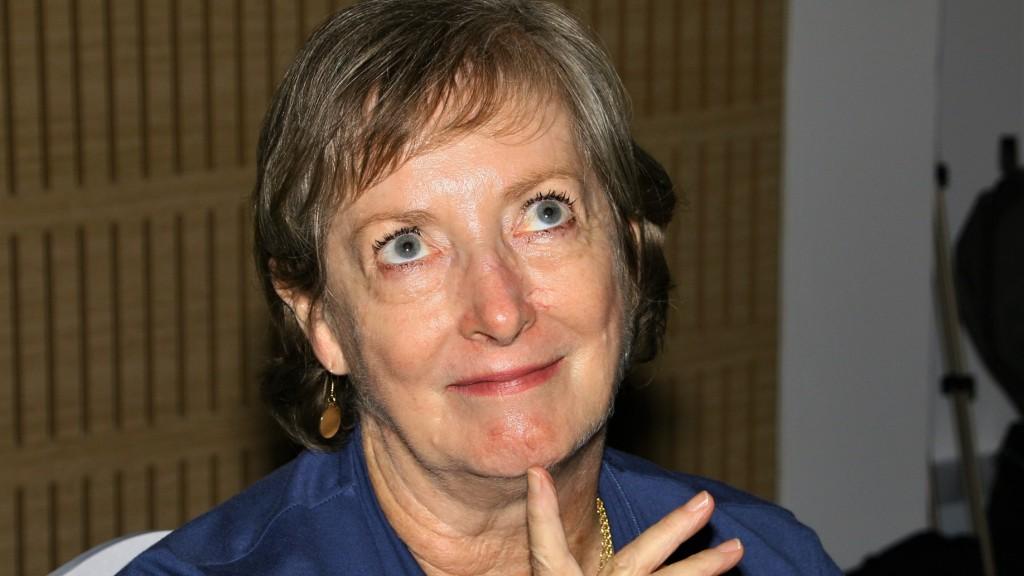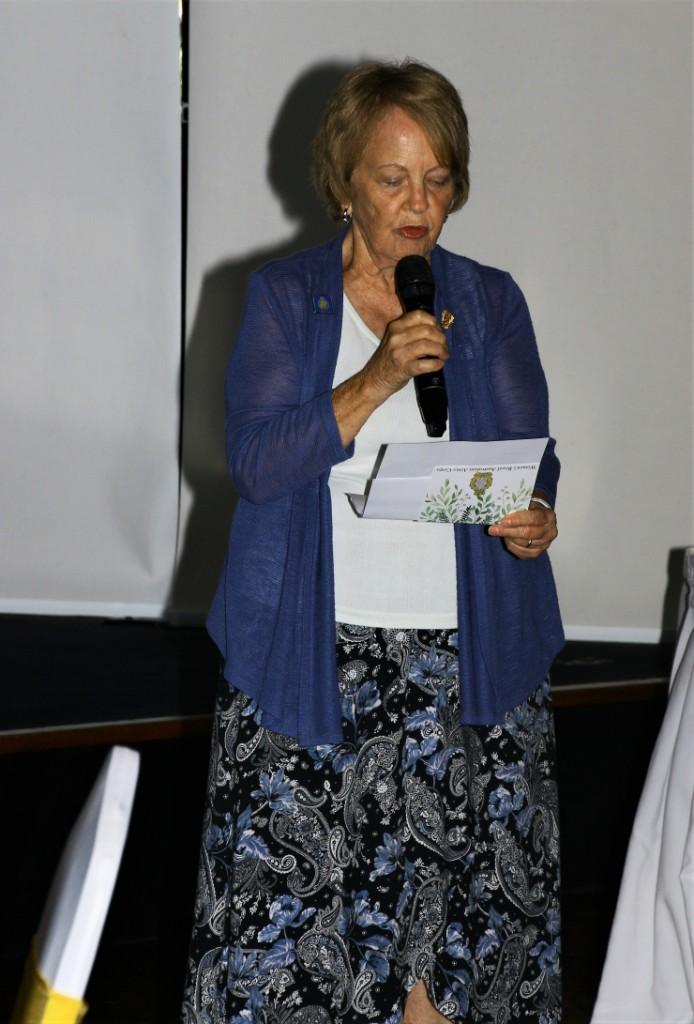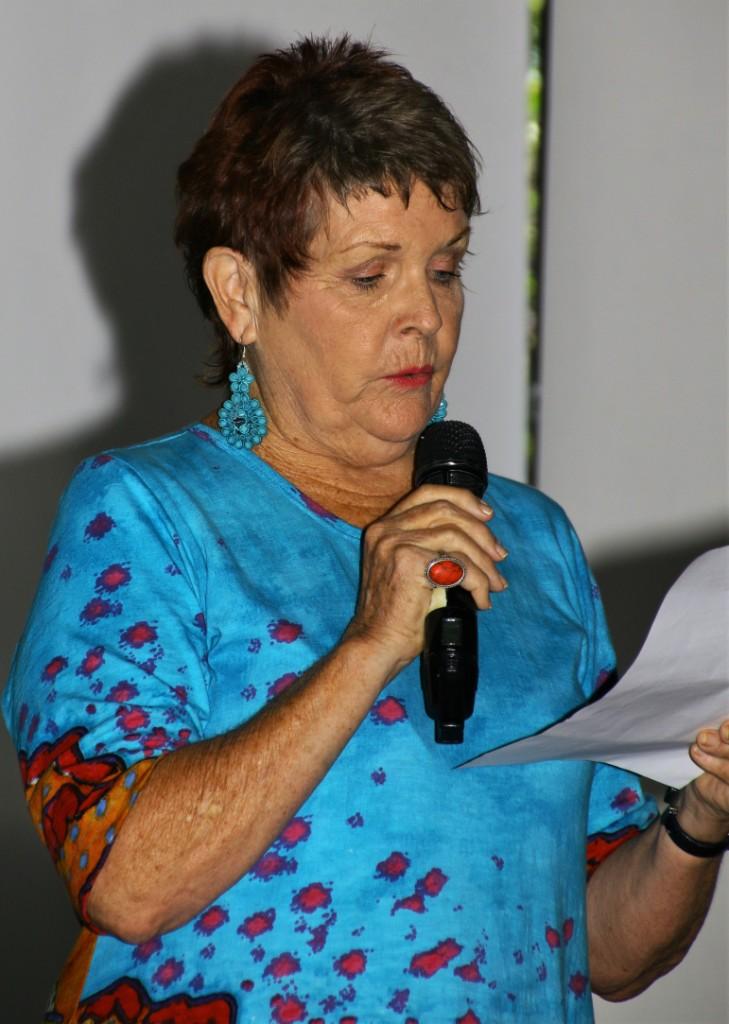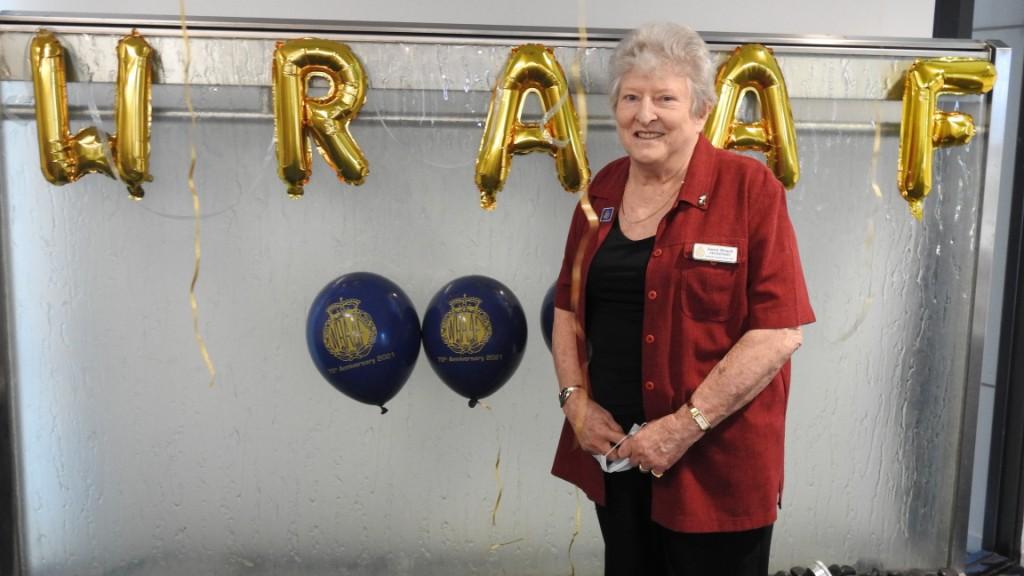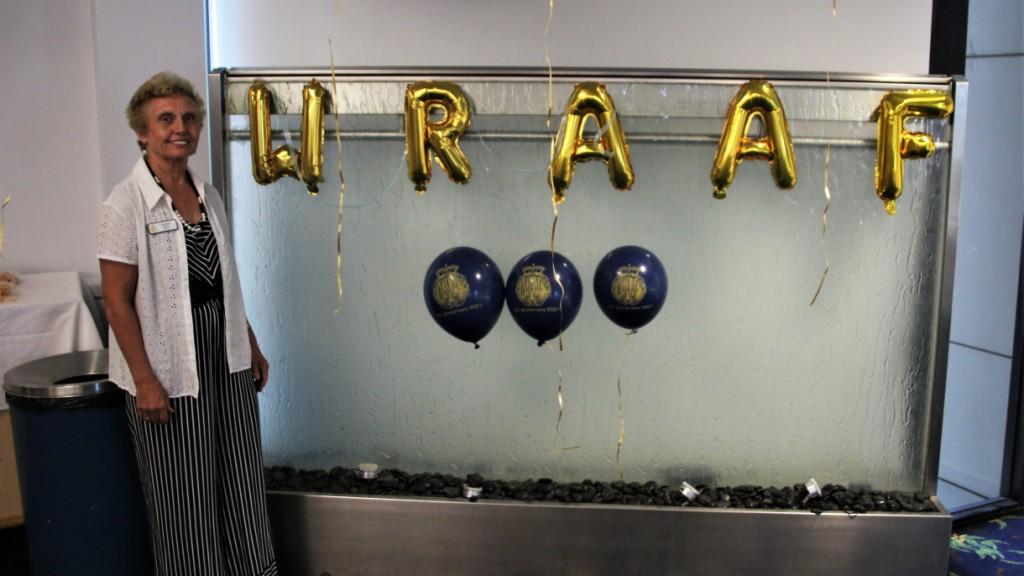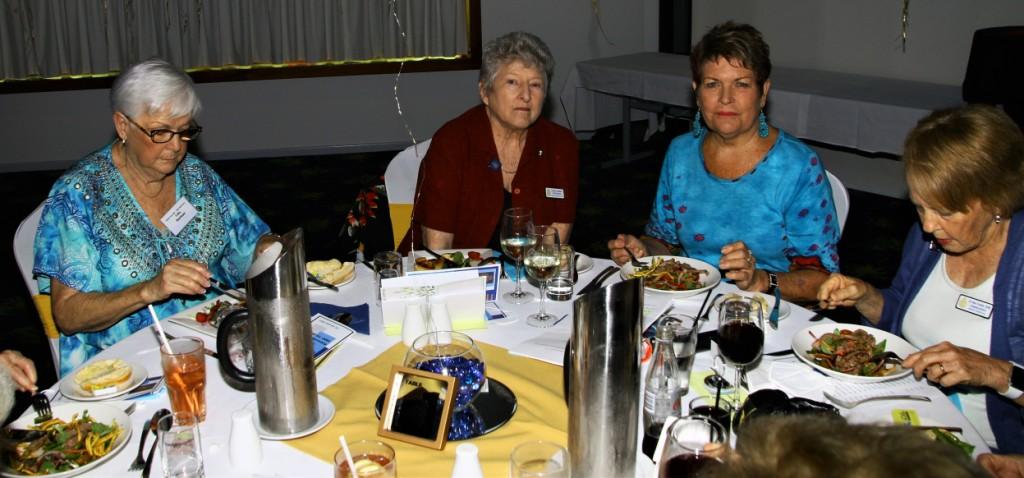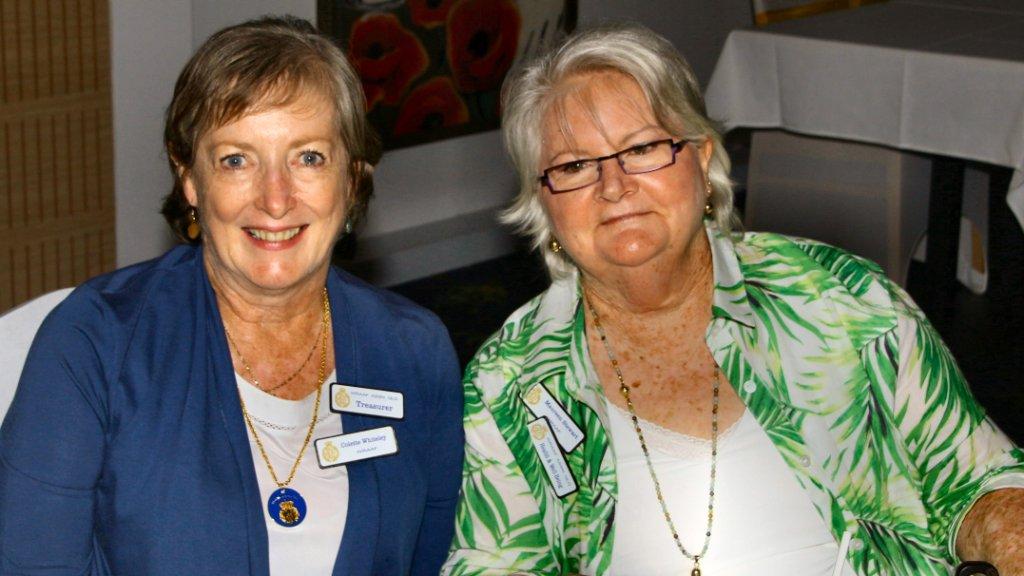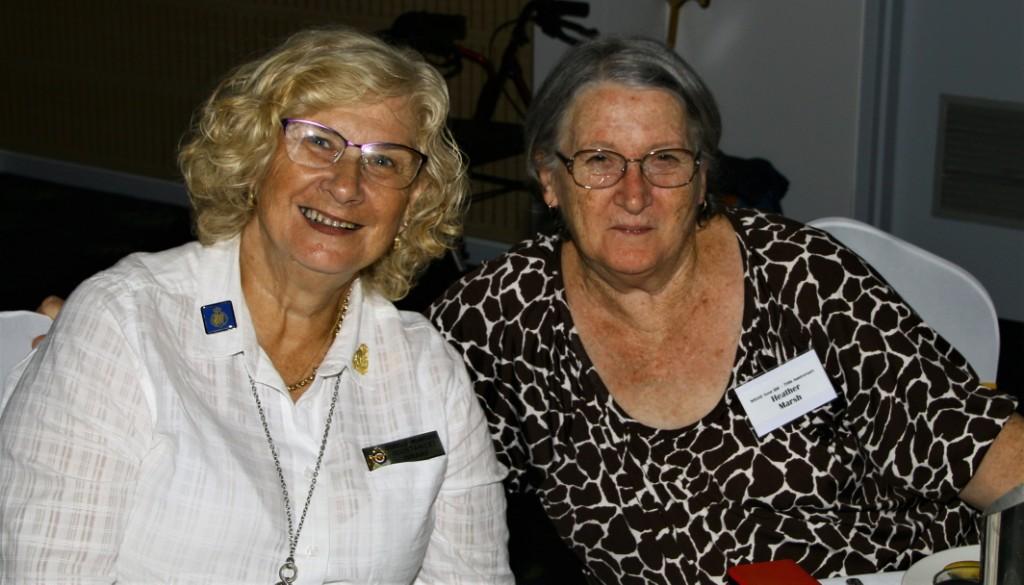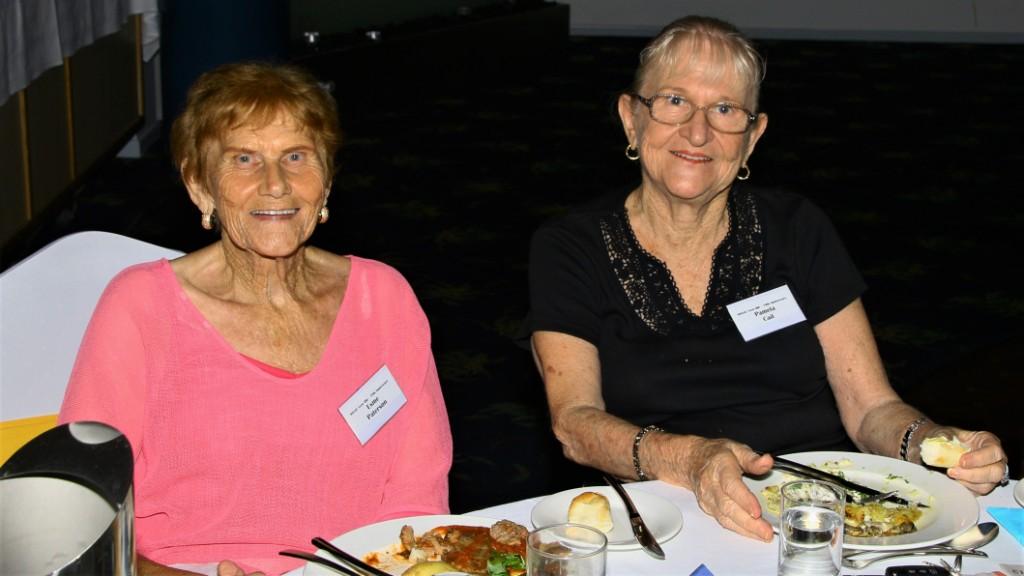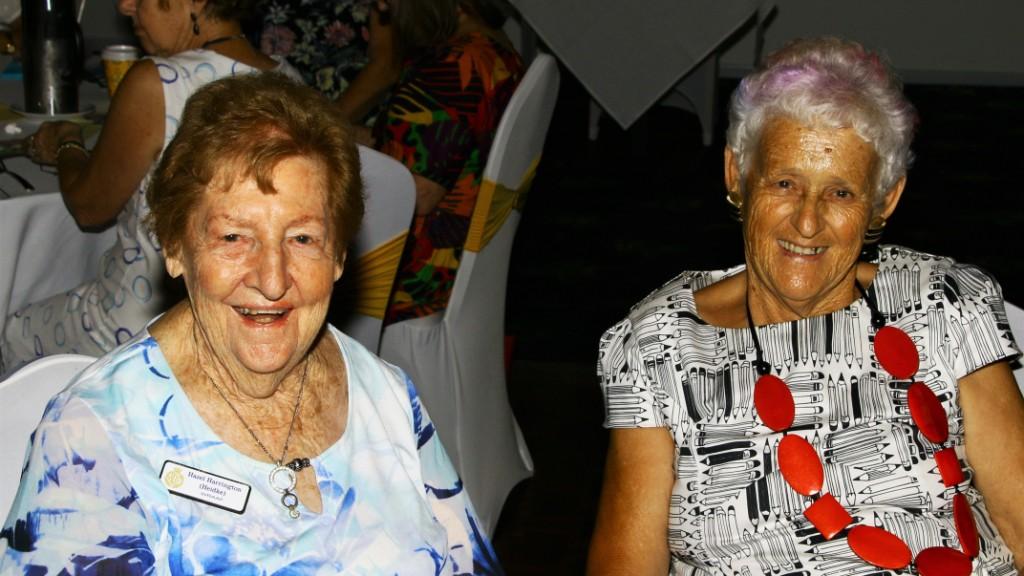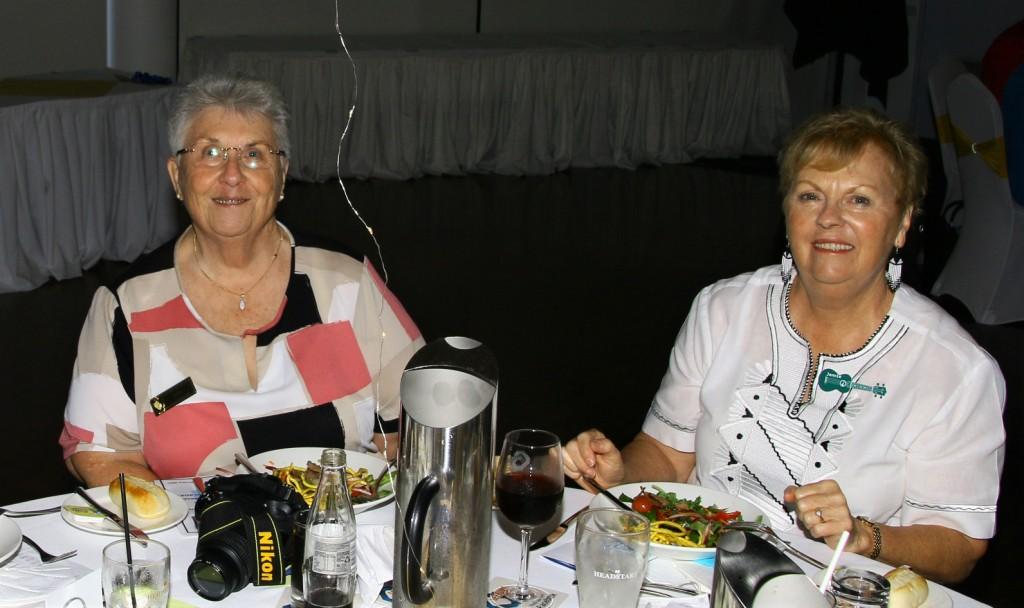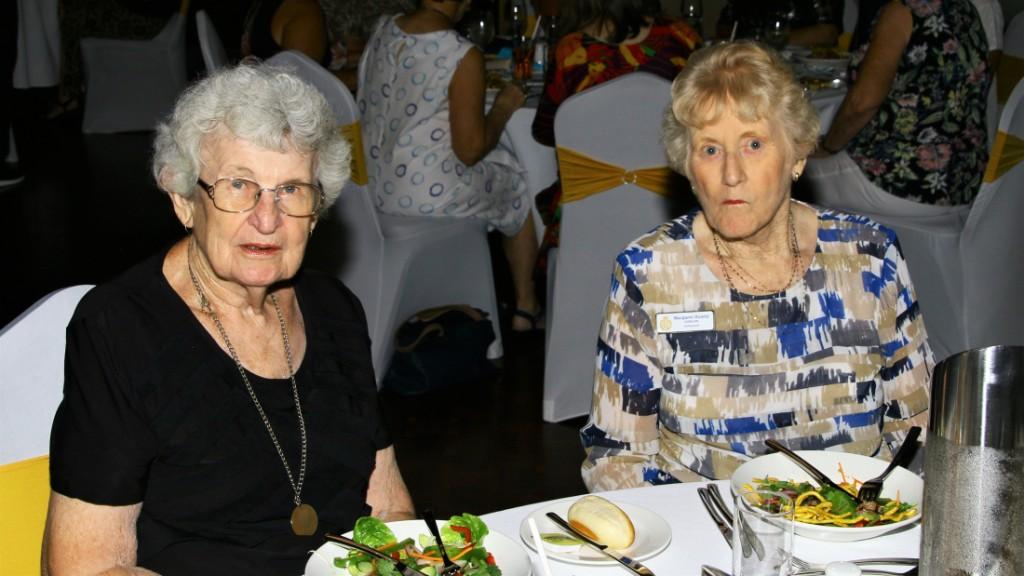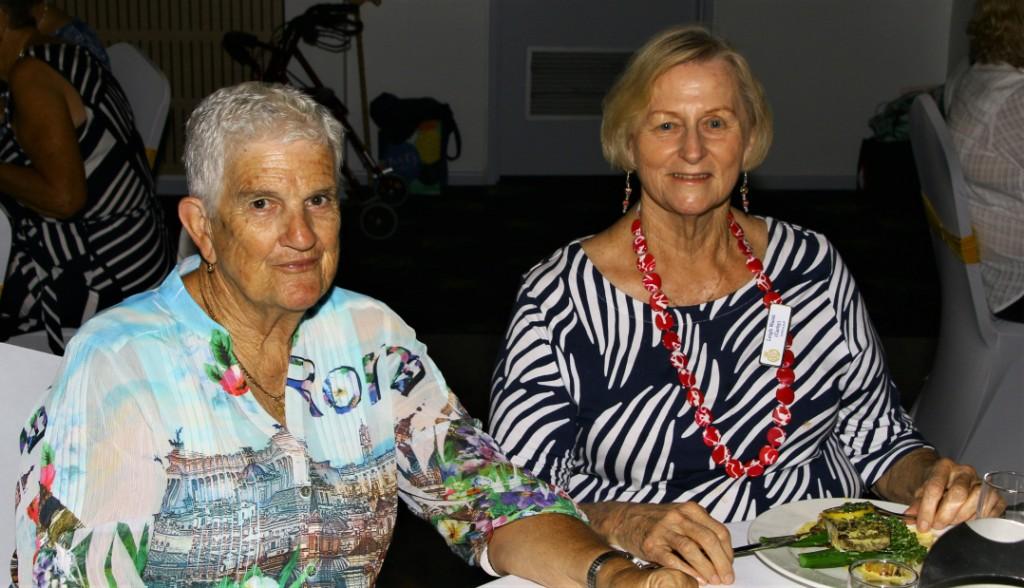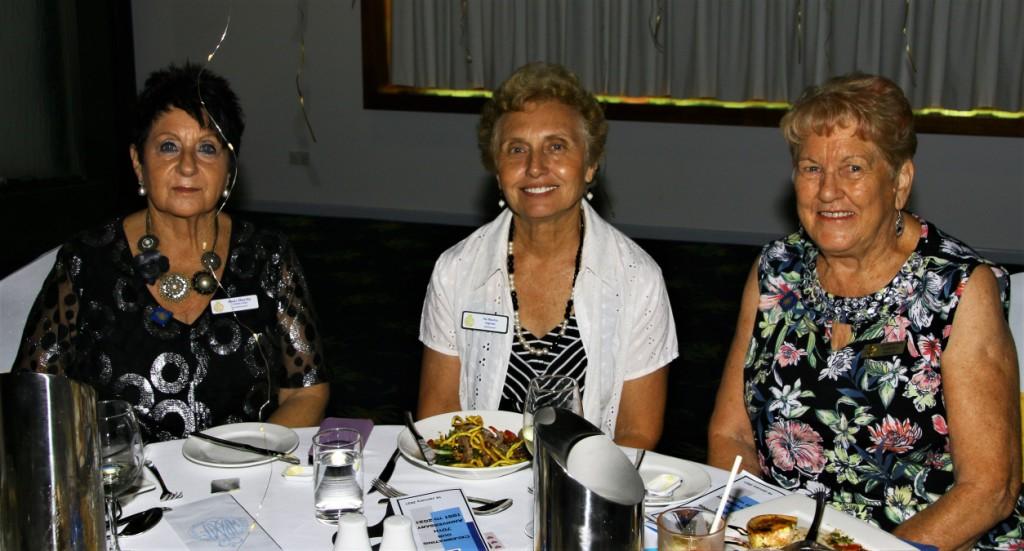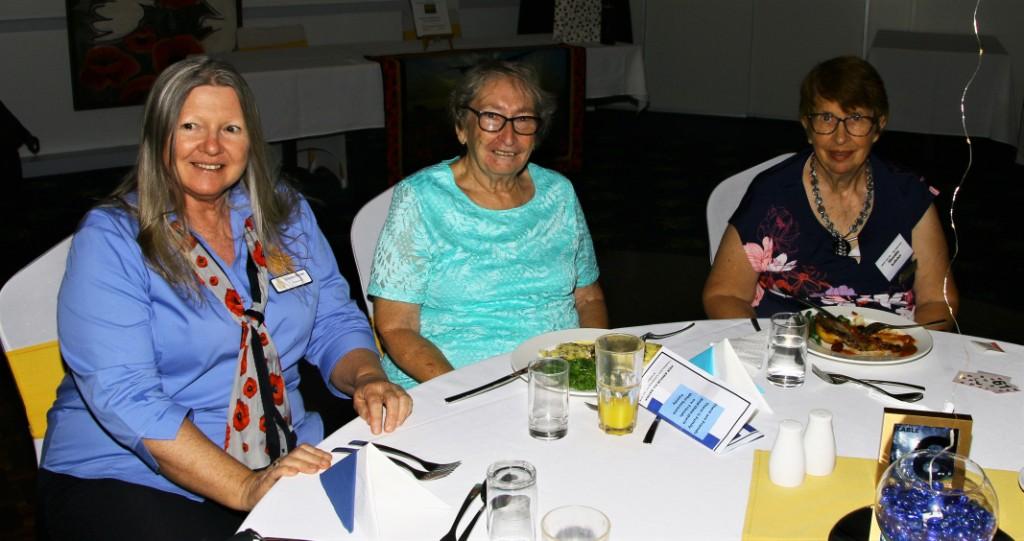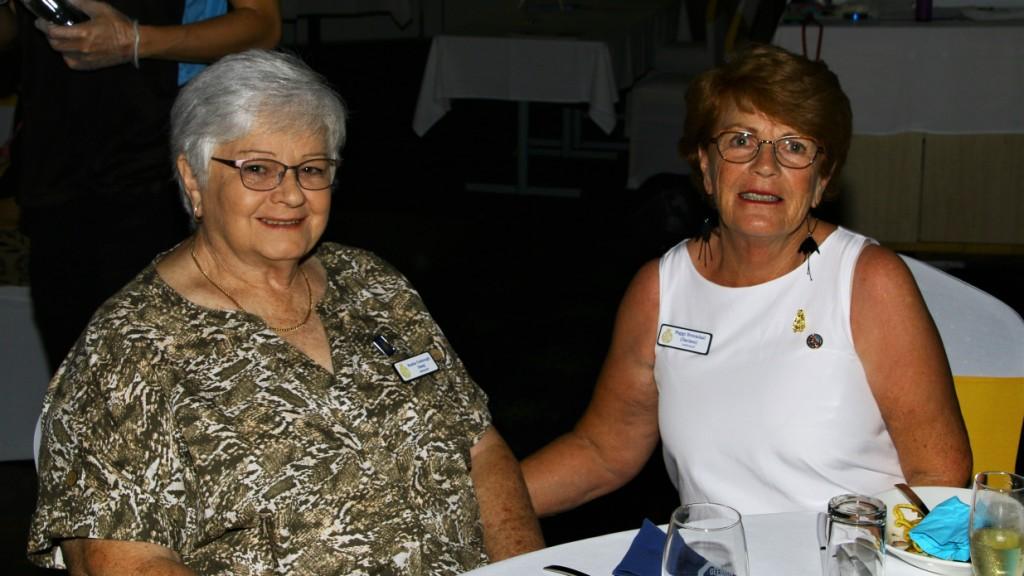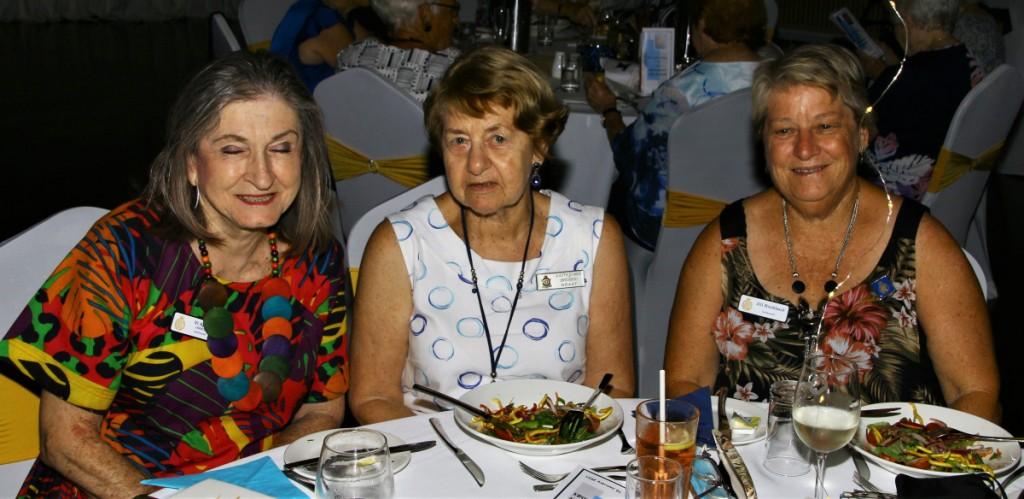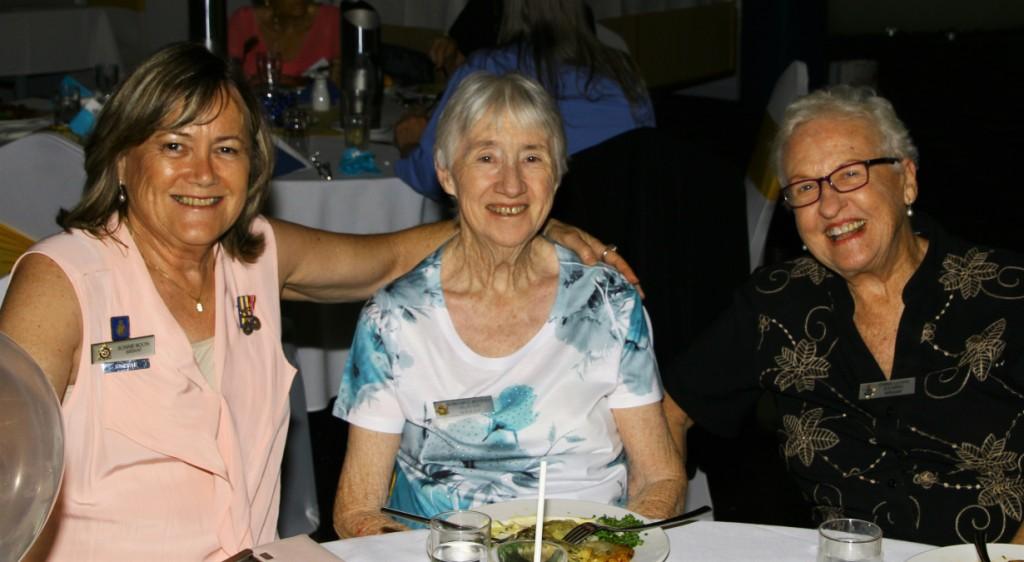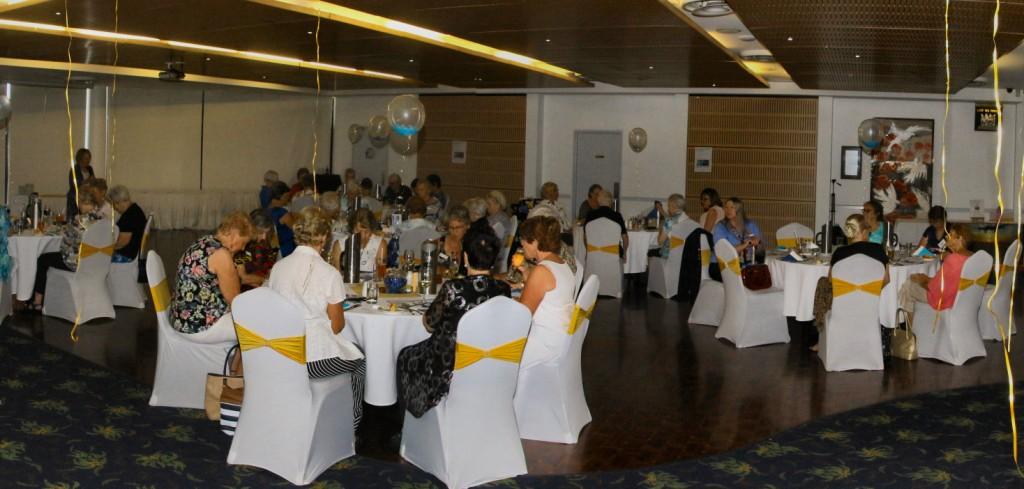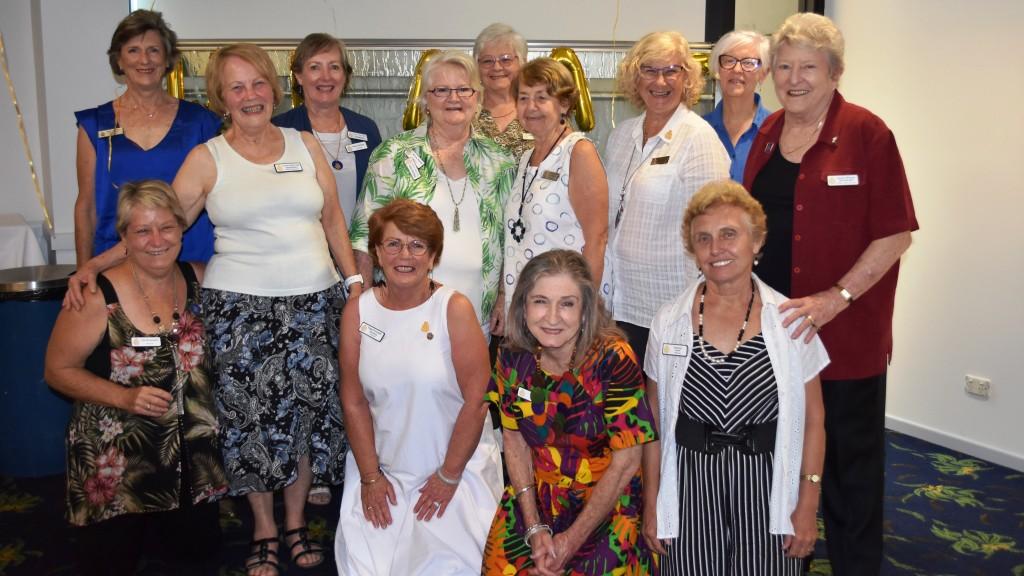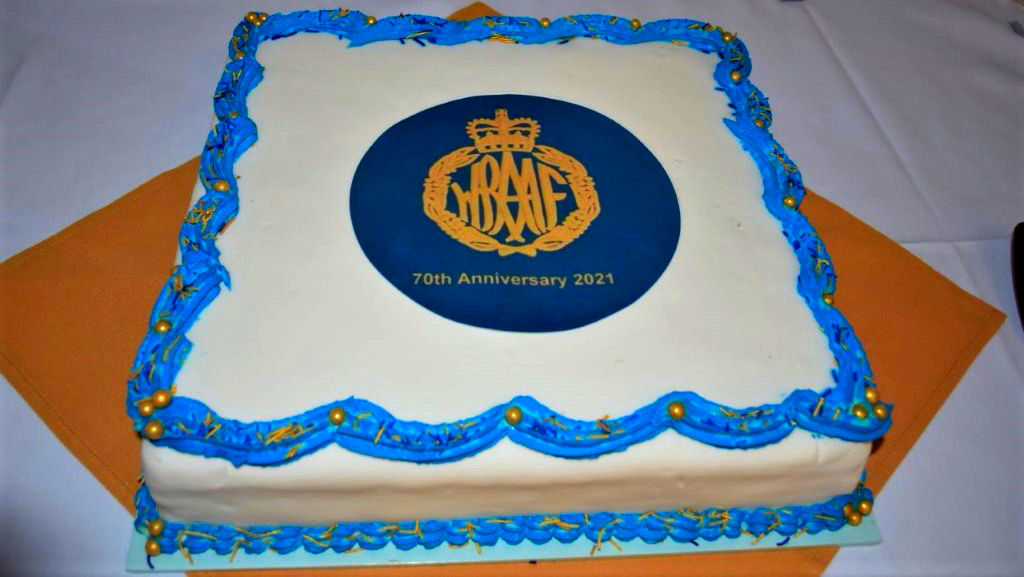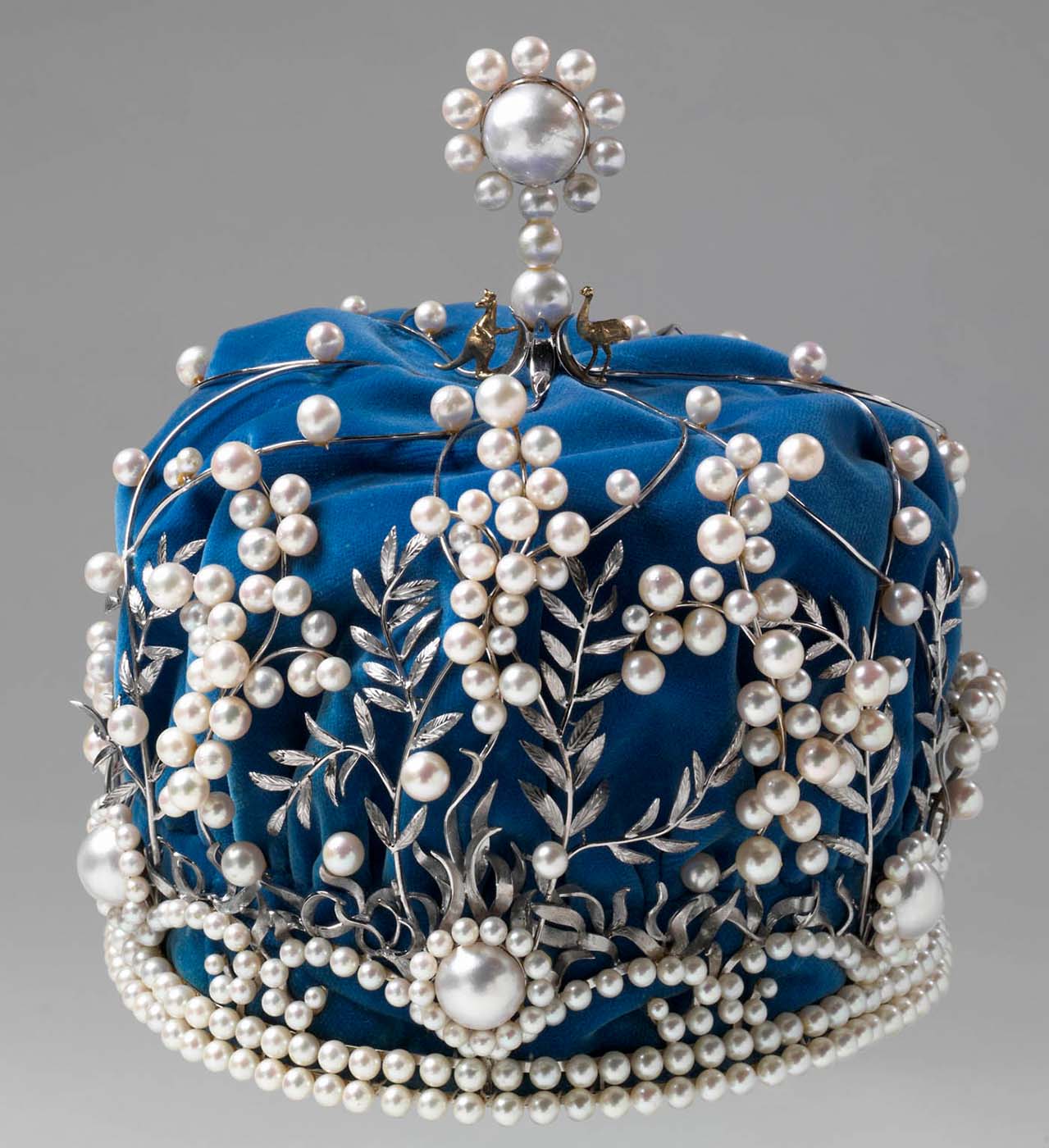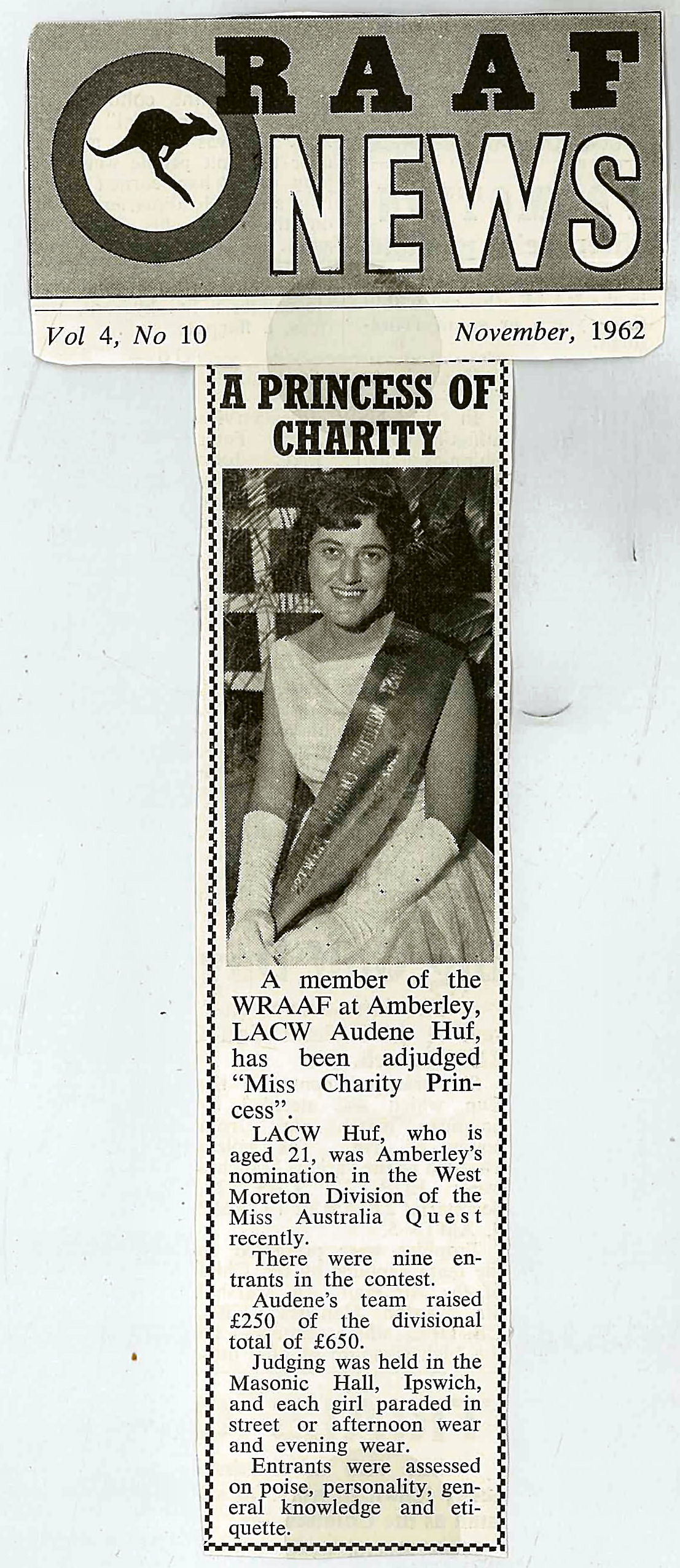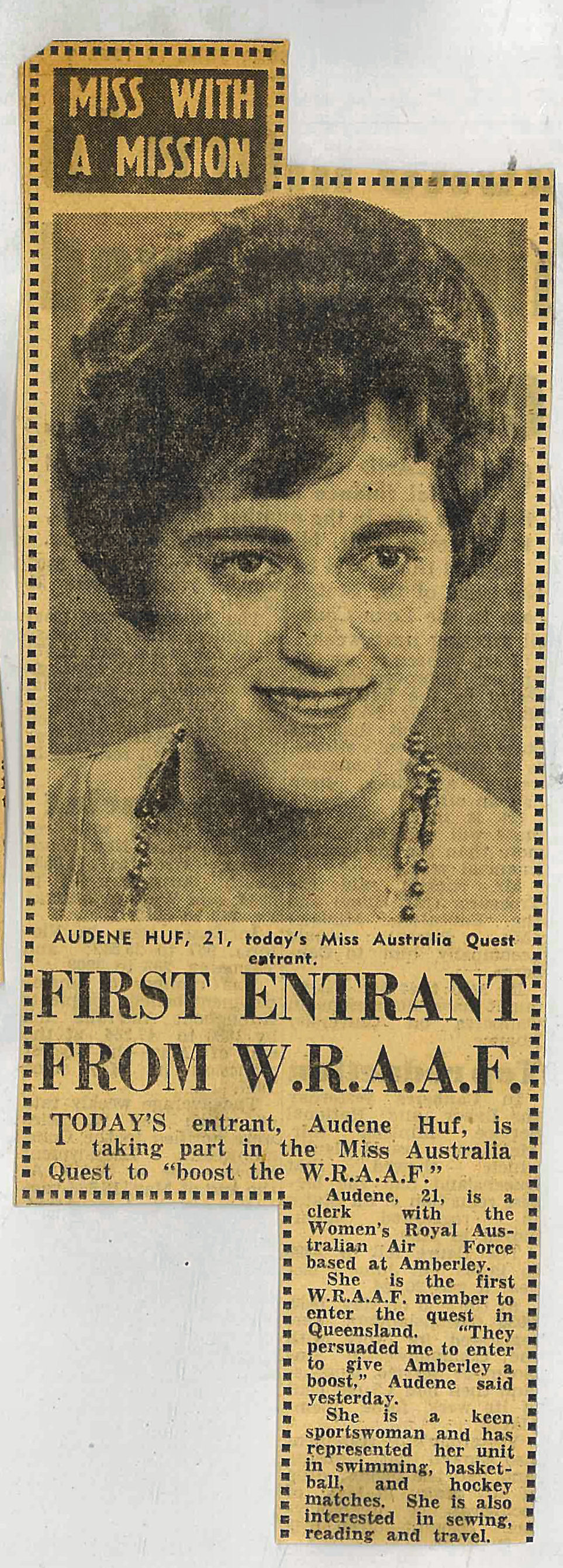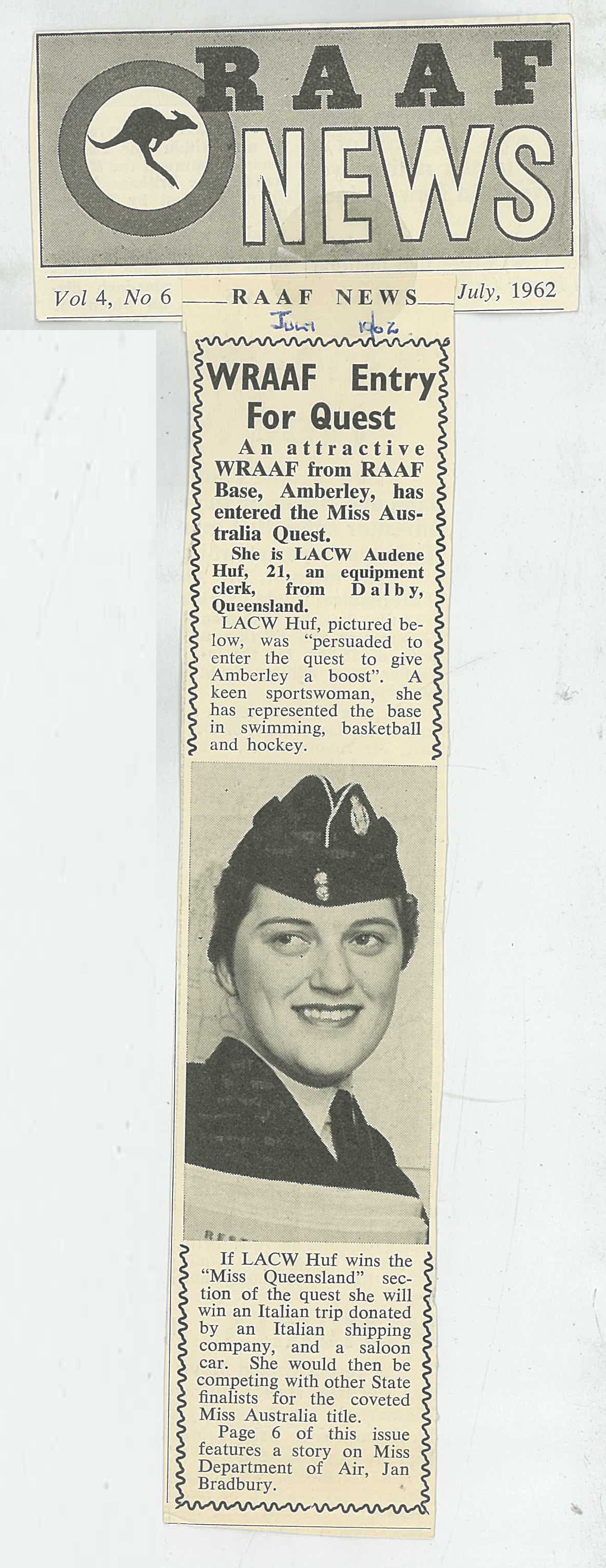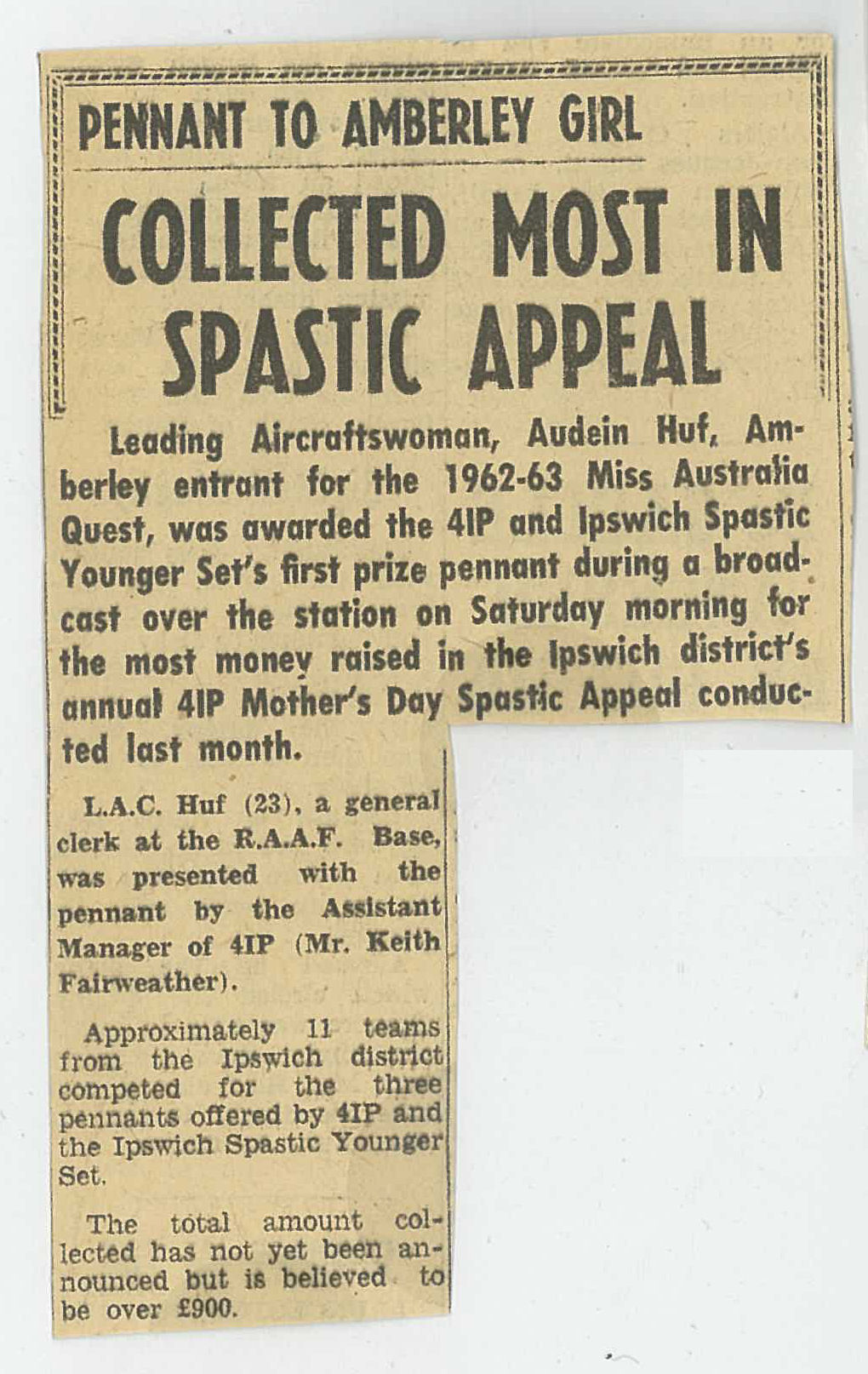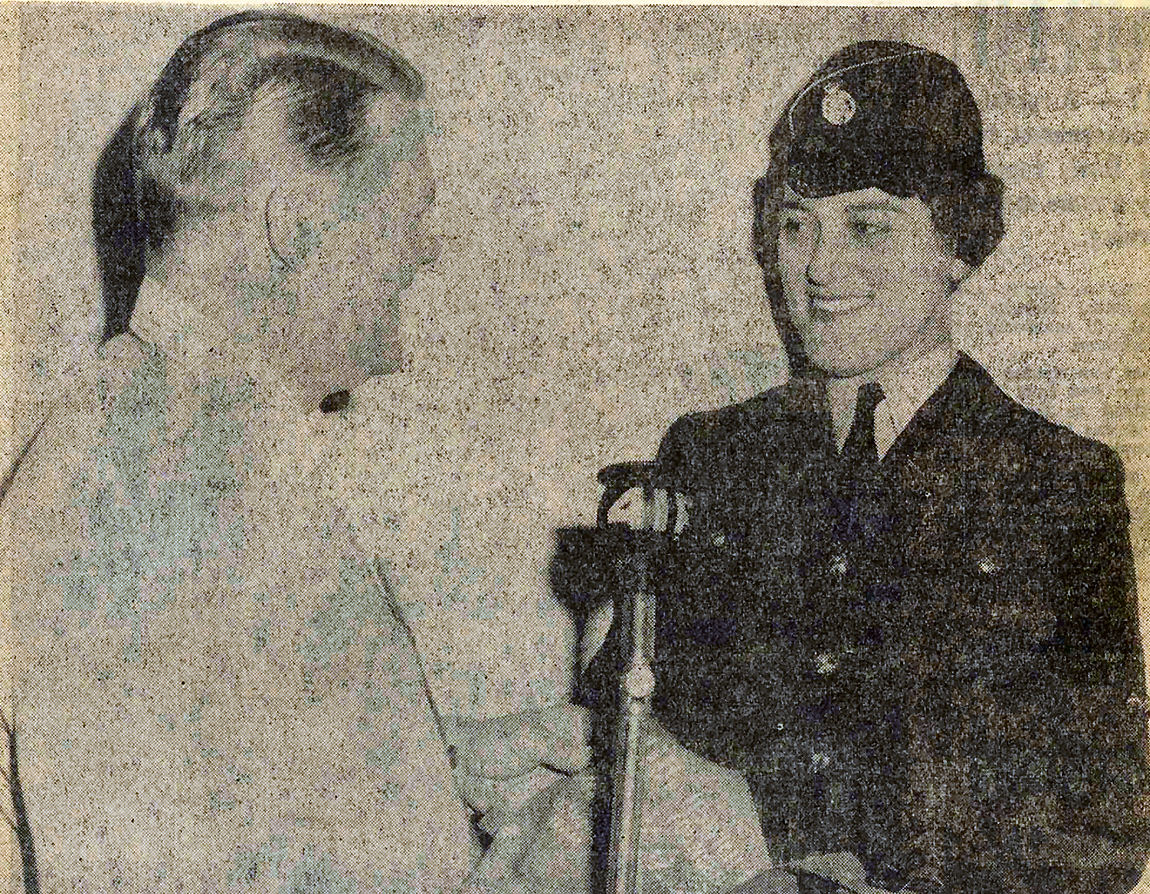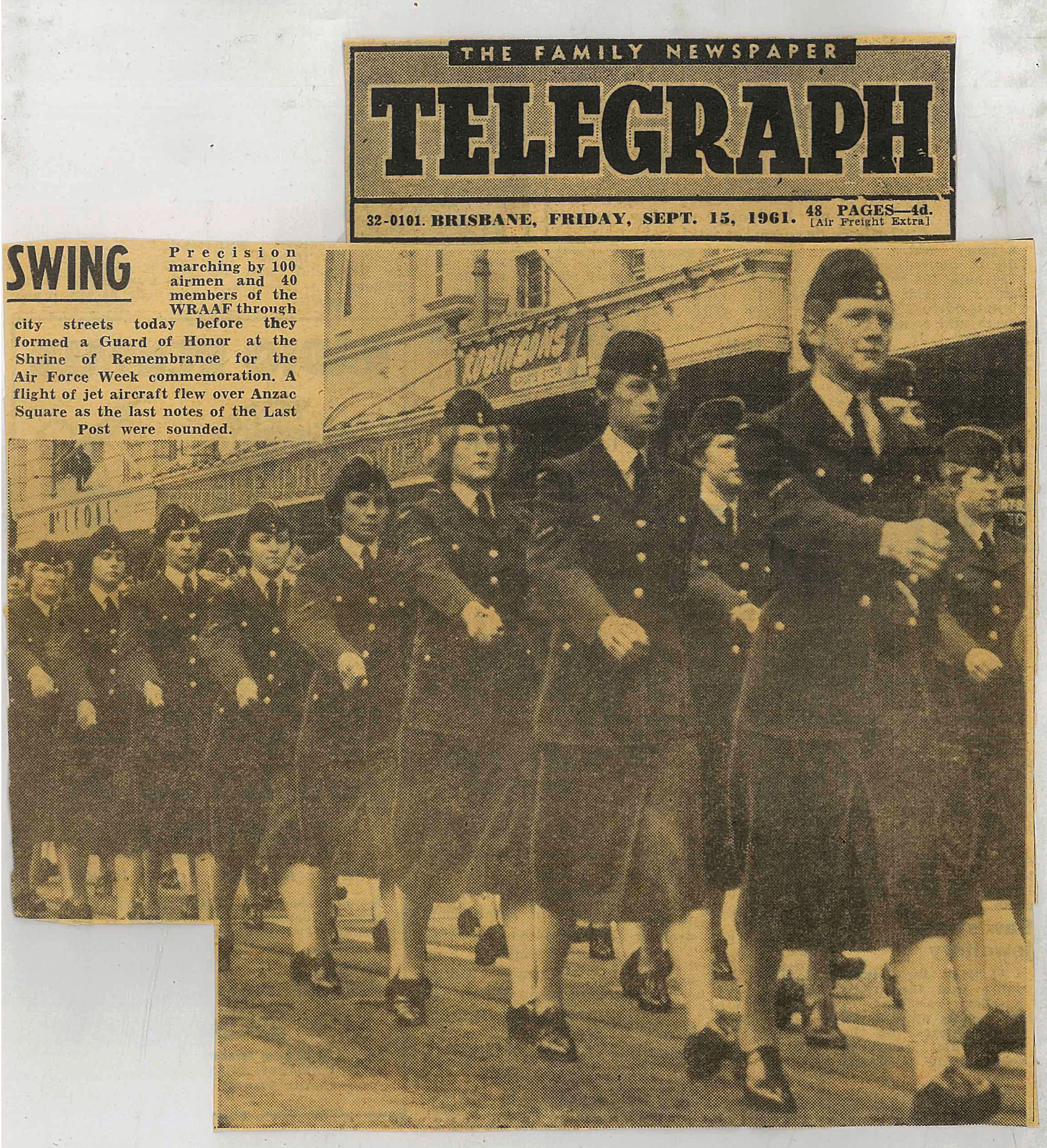|
|
|||||||||||||||||||||||||||||||||||||||||||||||
|
|||||||||||||||||||||||||||||||||||||||||||||||
|
Privacy Policy | Editorial Policy | Profit Policy | Join the Association | List of Members | Contact us | Index | Links |
|||||||||||||||||||||||||||||||||||||||||||||||
|
Back Go to page: 1 2 3 4 5 6 7 8 9 10 11 12 13 14 15 16 17 18 19 20 Forward |
|||||||||||||||||||||||||||||||||||||||||||||||
|
|
|||||||||||||||||||||||||||||||||||||||||||||||
|
WRAAF News.
|
|||||||||||||||||||||||||||||||||||||||||||||||
|
Contents.
WRAAF - 70th Anniversary dinner.
|
|||||||||||||||||||||||||||||||||||||||||||||||
|
|
|||||||||||||||||||||||||||||||||||||||||||||||
|
Some of the pics on this page have been crunched to allow them to open quicker. You can see/download the HD version by clicking each pic. |
|||||||||||||||||||||||||||||||||||||||||||||||
|
|
|||||||||||||||||||||||||||||||||||||||||||||||
|
From this edition, this page will be dedicated solely to all persons who, from 1950, donned the uniform and served Australia as WRAAF (and before them the WAAAF) – that group of lovely ladies without whom the Air Force could not and would not have operated efficiently.
Their contribution to the successful running of the Air Force is far too often overlooked – we hope to be able to remedy that.
HISTORY.
Unlike most British Commonwealth countries, Australia decided at the end of the 1939-45 war, to disband all her women's forces except the nursing services, but less than three years after the last of the WAAAF were demobilized in 1947, an announcement was made to Parliament by the Governor-General in February 1950, intimating the Government's intention to re-introduce a Women's Auxiliary Air Force.
In July 1950, Cabinet approved the re-establishment of a women's air force in principle and in August came recognition that women were essential components of the armed forces, in peace and war. No longer an Auxiliary, the proposed new Service was regarded as a Branch of the PAF, which was known as the WAAF until November 1950, when the Minister for Air announced that a further honour had been paid to Australian servicewomen by His Majesty, King George VI, who had approved the adoption of the title ' Women's Royal Australian Air Force'.
By the middle of December 1950, four officers were appointed as Flight Officers in the new Service. All had had previous service with the WAAAF. During December these four Flight Officers completed Refresher Courses at Laverton where they were joined by two Section Officers.
The size of the WRAAF (pronounced WAF) was limited to an establishment of 30 officers and 832 airwomen who were to form a well-trained nucleus which could be quickly and efficiently expanded in an emergency. From the very beginning, members were to engage in productive duties to ease acute shortages of staff in certain trades (eg, clerical and signals musterings) and release members of the RAAF for other work.
In 1965 the WRAAF ceiling establishment was raised to 1050.
In 1951, it was decided to grant officers short service commissions only, which might be extended for a period not exceeding three years, while airwomen were to be enlisted for four years with an opportunity to re-engage for further similar periods. In 1956, airwomen were permitted to re-engage for a shorter period of 2 years, if desired.
After December 1959, WRAAF were included in the Defence Forces Retirements Benefits Scheme and members had to be enlisted or appointed for a period of six years. Serving members of the WRAAF were given the option of electing to terminate their old engagements and commence new engagements of six years. In 1970 WRAAF officers were offered four or six year appointments to commission for the first time since 1959.
In 1972 Air Force Regulation 92 was amended to permit airwomen to elect a 3 or 6 year initial engagement.
The first permanent commissions were granted with effect 1 May 1965.
Recruit Training.
It had been an early intention to let the Service grow slowly and limit initial recruiting mainly to ex-Servicewomen already trained in skilled musterings. Enlistments were delayed while Treasury sorted out problems involving relations between the three women's services, but there was no lack of interest. Scores of enquiries had been received by July 1950 and by October, more that 2000 women had applied to join the WRAAF.
The first group of applicants were x-rayed and aptitude tested at Laverton on 12 December 1950. On 30 January 1951 (the date accepted as the WRAAF Birthday) 16 trainees from Victoria and seven from South Australian commenced No. 1 Recruit Course at Laverton. On the same day 27 recruits from NSW began No. 2 Course at Richmond. Other recruit courses followed in quick succession and training was also conducted at Point Cook and Pearce.
Courses were later confined to Richmond and Laverton. Training ceased at Richmond and Laverton in 1952 and 1953 respectively and under the new Command structure WRAAF Recruit Training was transferred to Point Cook. In 1965 the WRAAF Recruit Training Section became a squadron of 1 RTU at RAAF Edinburgh.
Courses for recruits were increased from 4½ weeks to 5 weeks in 1970.
|
|||||||||||||||||||||||||||||||||||||||||||||||
|
Musterings.
Originally 21 musterings were open to WRAAF:
|
|||||||||||||||||||||||||||||||||||||||||||||||
In 1968 the pay-grouping system was again revised and 14 pay-groups were added to the existing seven. Some musterings were re-allotted to pay groups more appropriate to their skills and the mustering of book-binders was introduced.
Postings - Policy.
An early policy that WRAAF should be posted as close as possible to their home town soon proved impractical. Furthermore, many airwomen had enlisted specifically to see service in other States.
Overseas Service. A few airwomen took part in operation 'Southern Cross' in 1967 and this combined Australian and New Zealand exercise was their first opportunity to serve, for however short a time, outside Australia. A few months later approval was given by the Government for women in the WRANS, WRAAC and WRAAF to be posted overseas. (Click the pic to be able to read it)
Barracks.
Units were willing to receive WRAAF from the first but only a few, eg, Laverton, had quarters available. On most units, eg, Toowoomba, new buildings had to be erected and extra equipment obtained. At SCLAW (School of Land/Air Warfare - Williamtown) and Canberra the initial postings of WRAAF were few, and the airwomen were temporarily housed in sick quarters or such huts as were available.
In some cases it seemed a long wait, but the new buildings unmarked by previous occupants and specially designed were well worth waiting for. For the most part, wherever new quarters were built, a recreation room and kitchenette formed part of the construction or was adjacent to it. Wooden beds replaced iron beds after the first few years and rubber mattresses were approved in 1961. Divan beds were supplied to new quarters in the early 1970’s.
1967-68 saw the beginning of a new era in WRAAF accommodation. Comfortable, well-designed brick quarters were built thereafter and offered single rooms with built-in furniture and attractive recreation areas.
Uniforms.
In 1950 uniforms were designed for the WRAAF by the Commonwealth Government Clothing Factory in consultation with Miss Rita Findlay, a Director of Georges' Ltd Melbourne, and despite a certain amount of criticism, these uniforms were a big advance on wartime WAAAF issue.
The summer dress, a blue grey rayon long sleeved frock was quite a change from the old khaki drill shirt and skirt. A blue forage cap with light blue piping replaced the peaked cap of the WRAAF winter uniform, the new jacket was fitted to be worn without a belt, and a box pleat was added to the navy skirt. Minor but popular additions to the uniform comprised a black leather sling shoulder bag, black (instead of tan) gloves and nylons. Permission to fold handbag strap and carry the handbag over the wrist was given in 1960.
Despite the attention given to equipment all difficulties were not foreseen, eg, the size rolls for uniforms were originally copies from those used for the manufacture of women's garments by a large city firm. Needless to say, such a firm catered for an age range extending far beyond that at which women were likely to be serving in the forces, but this was not taken into account when WRAAF uniforms were ordered. The arrival of raincoats from the United Kingdom caused further consternation. These had been made to wartime specifications and it was forgotten that post-war fashion had decreed a lengthened hemline.
Nevertheless, at least the essential minimum of clothing was ready in time and the new style, an initial clothing allowance of £10 (now $42) and the expectation of WRAAF attache and suitcases, made prospects reasonably bright.
A new type of dual purpose coat, a double breasted gaberdine with a detachable inner half-lining, was received early in 1954 and about the same time, the WRAAF, together with the RAAF, changed their black buttons for gilt. The blue-grey long sleeved summer uniform was replaced in 1956 by a blue-white short sleeved frock. WRAAF were permitted to purchase nylon raincoats on repayment in 1962, but raincoats were not brought onto the Scale of Issue.
Revised Uniform.
The uniform was revised in 1962 and major changes suggested. Recommendations were made for new styled hats, overalls as a two-piece garment, alterations to Dress 1A and permission to carry umbrellas and to wear high heeled shoes off the unit and on certain informal occasions. These recommendations were approved in 1963, and issues were made progressively as old stocks were used up. A major revision and updating of uniform was approved in December 1972.
|
|||||||||||||||||||||||||||||||||||||||||||||||
|
|
|||||||||||||||||||||||||||||||||||||||||||||||
|
|
|||||||||||||||||||||||||||||||||||||||||||||||
|
Some of the uniforms.
|
|||||||||||||||||||||||||||||||||||||||||||||||
|
|
|||||||||||||||||||||||||||||||||||||||||||||||
|
WAAAF Uniform. |
|||||||||||||||||||||||||||||||||||||||||||||||
|
|
|||||||||||||||||||||||||||||||||||||||||||||||
|
WRAAF.
|
|||||||||||||||||||||||||||||||||||||||||||||||
|
|||||||||||||||||||||||||||||||||||||||||||||||
|
Mess Kits
Mess Kits were approved and worn for the first time in 1965. Fabric gloves for summer were approved in 1966.
Equal Pay Principles.
The National Wage Case of 1969 established the principle of the gradual introduction of equal pay for identical work. In 1970 this principle was applied to airwomen who, in step with female civilians, gradually achieved 100% of the basic wage by 1972. NCOs, however, received only 66 2/3 of the male margin granted for rank, which increased to 80% in 1971. WRAAF officers prior to 1970 received between 66 2/3 and 68% of male officer rates. This percentage was increased to 76-78% from December 1970.
Retention of Married Women.
A change in policy in 1969 permitted a member of the WRAAF to continue serving after marriage if she:
Promotion.
Promotion for Section Officers from 1951 to 1963 depended on vacancies, with the result that some members were promoted in two years whereas others, equally capable, waited over five years before a vacancy occurred. In 1963 a new policy was effected whereby Section Officers were promoted after three years, subject to satisfactory service and their Commanding Officer's recommendations.
Pensions.
From 1951-59 members received a gratuity of £60 on completion of four years’ service. Since 1960, members have been eligible for DFRB benefits.
Integration Into the RAAF
The WRAAF and the RAAFNS integrated into the RAAF in 1977. Female officers assumed the same ranks as male officers. The integration of male and female personnel permitted greater use of manpower resources. The same policies and administrative procedures apply equally to the employment of both males and females, unless specific and justifiable reasons necessitate different treatment.
Memento Media filmed oral history interviews with three ex-WRAAF members to produce these short documentaries telling the unique stories of this era in the Point Cook Air Base’s long-spanning history. In the series, an officer, an administrative clerk and a telephonist share their memories of joining the Air Force and the opportunities and challenges that it represented. Intewresting video here https://youtu.be/-Kv1T72tClQ’’
70th Anniversary Dinner.
On Saturday, the 16th January, 2021, a group of Ladies got together at the Geebung RSL Club (Brisbane) to celebrate the 70th anniversary of the formation of the WRAAF.
Those present included: (All names Left to Right).
|
|||||||||||||||||||||||||||||||||||||||||||||||
|
Dulcie Noonan (OAM) and Maureen Souter.
|
|||||||||||||||||||||||||||||||||||||||||||||||
|
In recognition of their loyalty to Australian Air Force Women, commencing with their membership to the Women’s Auxiliary Australian Air Force Branch of RAAFA Qld Div, then transferring to the newly established WRAAF Branch of RAAFA Qld Div in January 1996 and finally, to the WRAAF Association in 2018, both Dulcie and Maureen were awarded life membership of the WRAAF Association (Qld).
Dulcie turned a spritely 90 in Feb this year and as Dulcie Kundie, joined the WRAAF in March 1951. She was awarded the OAM for service to the disabled back in June 1981.
Maureen was on Course 149 in June 1965.
Dulcie showed us a couple of photos she’d had for many years which she said we could show here.
Queensland girls – just after they had signed on to join the WRAAF.
|
|||||||||||||||||||||||||||||||||||||||||||||||
|
|
|||||||||||||||||||||||||||||||||||||||||||||||
|
Shirley Thompson, Wyn Smith, Chris Simmonds, Joyce Todd, Joan Brandon, June Harrison, Dulcie Kunde.
|
|||||||||||||||||||||||||||||||||||||||||||||||
|
The pic below was taken as this bunch of girls were boarding the train from South Brisbane station, heading off for a life in the WRAAF.
|
|||||||||||||||||||||||||||||||||||||||||||||||
|
|
|||||||||||||||||||||||||||||||||||||||||||||||
|
Shirley Thompson, Wyn Smith, Christine Simmonds, Joyce Todd, Joan Brandon, June Harrison, Dulcie Kunde. The lady in uniform was Gwen Fitzgerald.
|
|||||||||||||||||||||||||||||||||||||||||||||||
|
Others at the reunion were: (The number represents the lady’s recruit course.)
|
|||||||||||||||||||||||||||||||||||||||||||||||
|
Bonne Boon (APHPLOT, PhotoInt – from Course 207), Elizabeth Ryan (nee Chaffey) – Stewardess with 34 Sqn. 121, Dorelle Mumford (nee Eustance) TPrintOp. 201. Val Machin (nee Ingram) ClkSply 202.
|
|||||||||||||||||||||||||||||||||||||||||||||||
|
The Gate Keeper. Before anyone got in, they had to have their names ticked off by the gate-keeper who also delved into their purses and lighted the load a little.
|
|||||||||||||||||||||||||||||||||||||||||||||||
|
Colette Whiteley (Nee Hill) ClerkA, 182. Colette is the Treasurer of the WRAAF Association (Qld).
|
|||||||||||||||||||||||||||||||||||||||||||||||
|
Colette, wondering if she could get away with stuffing a few of those $50 notes into her shoe.
|
|||||||||||||||||||||||||||||||||||||||||||||||
|
President Pam Condie welcomed everyone to the afternoon.
|
|||||||||||||||||||||||||||||||||||||||||||||||
|
Lenore McDonald, the MC for the afternoon, kept everyone amused with her non-stop repertoire of funny stories.
|
|||||||||||||||||||||||||||||||||||||||||||||||
|
Janet Noack, the Secretary of the WRAAF Association (Qld), and who shouldered a lot of the work organising the afternoon.
|
|||||||||||||||||||||||||||||||||||||||||||||||
|
Val Machin – one of the ladies on the working committee.
|
|||||||||||||||||||||||||||||||||||||||||||||||
|
Lola Hurman (nee Mooney, ClerkAdmin – 81), Janet Noack, the Secretary of the WRAAF Association (153), Lenore McDonald, WRAAF – MC for the afternoon), Pam Condie, President of the WRAAF Association, (Nee Hiddins, Clerk Medical - 147)
|
|||||||||||||||||||||||||||||||||||||||||||||||
|
Colette Whiteley, Maureen Stewart, Health & Well Being Committee member, (Steward - 207)
|
|||||||||||||||||||||||||||||||||||||||||||||||
|
Dorelle Mumford, Heather Marsh (Nee Armstrong - 206).
|
|||||||||||||||||||||||||||||||||||||||||||||||
|
Esme Patterson (Equipo – 80), Pamela Cail, (Nee Kemp, Equipo – 80).
|
|||||||||||||||||||||||||||||||||||||||||||||||
|
Hazel Harrington (Nee Heidke, Clerk G – 32), Mary Whylie, (Nee Ashe – 110)
|
|||||||||||||||||||||||||||||||||||||||||||||||
|
Larraine Houlihan WRAAC, official photographer for the afternoon, Jennie Promnitz, Jennie was the official recorder for the afternoon.
|
|||||||||||||||||||||||||||||||||||||||||||||||
|
Margaret Stevenson (Nee Fairfull, Clerk – 88), Margaret Humby (Nee Crellin, Equipo -99)
|
|||||||||||||||||||||||||||||||||||||||||||||||
|
Maureen Breeze, (Nee Kelly, Clerk G – 136), Leigh Walsh, (Nee Carby, Tailoress – 139)
|
|||||||||||||||||||||||||||||||||||||||||||||||
|
Pamela Hardy, RNZAF, Val Machin, Elizabeth Ryan.
|
|||||||||||||||||||||||||||||||||||||||||||||||
|
Rhonda Forrest, (Switchie, 56/86), Shirley Van Stam, (Nee Evans, Teleprinter – 136) Rhonda Kelleher (Nee Wyer, Switchie - 154)
|
|||||||||||||||||||||||||||||||||||||||||||||||
|
Susita Colelough, (Nee Daley, Tpt Driver – 153), Peggy Broomhall, (Nee Davison, Clerk Supply, - 237)
|
|||||||||||||||||||||||||||||||||||||||||||||||
|
Vi Speis, (Nee Reece, Stewardess, 152), Judy Evans, (Nee Bridges, Clerk – 88), Jill Buckland, (SWNCO – 188)
|
|||||||||||||||||||||||||||||||||||||||||||||||
|
Bonnie Boon 207, Margaret Huntley (Nee Butler - Transport driver, 134), Chris Lloyd (Nee Clark - Personnel Selection Assessor, 159).
|
|||||||||||||||||||||||||||||||||||||||||||||||
|
Sitting down – enjoying lunch.
|
|||||||||||||||||||||||||||||||||||||||||||||||
|
The hard-working Committee that made it all possible.
|
|||||||||||||||||||||||||||||||||||||||||||||||
|
Back row: Anne Quinell; Colette Whiteley; Susita Coleclough; Pamela Ritter Middle: Jill Buckland (kneeling); Pam Condie; Maureen Stewart; Judy Evans; Dorelle Mumford; Janet Noack Front: Peggy Broomhall; Vi Spies; Val Machin.
|
|||||||||||||||||||||||||||||||||||||||||||||||
|
|
|||||||||||||||||||||||||||||||||||||||||||||||
|
The wonderful anniversary cake.
|
|||||||||||||||||||||||||||||||||||||||||||||||
|
|
|||||||||||||||||||||||||||||||||||||||||||||||
|
|
|||||||||||||||||||||||||||||||||||||||||||||||
|
Miss Australia.
Miss Australia was the title for the winner of the Miss Australia Quest or the Miss Australia Awards, which ran from 1954 until 2000, when the last Miss Australia was named. From 2002, the Miss World Australia contest has been held, and the Miss Universe Australia contest has been held since 2004.
The title of Miss Australia had existed since 1908, although it was not until 1954 that it became associated with the Spastic Centres of Australia. The Miss Australia Quest was sponsored and organised from 1954 until the early 1960s by the lingerie manufacturer, Hickory, until Dowd Associates transferred the ownership to the Australian Cerebral Palsy Association in 1963.
From 1926 to 1991 the program operated as the Miss Australia Quest, after which the name was changed to the Miss Australia Awards to reflect changing community attitudes. Miss Australia raised money for the Spastic Centres of Australia through her family and friends. She was judged on merit, as well as raising the monies for children and adults with cerebral palsy.
The pearl-encrusted Miss Australia crown, worn by titleholders from 1965 to 1991 was was hand-crafted in silver and blue velvet and decorated with more than 800 pearls. Designed by Melbourne artist Ernest Booth and manufactured in Japan, the crown was presented to the Miss Australia Quest in 1965 by Toyomoto Australia Pty Ltd. The crown was last used in 1991 and is held at the National Museum of Australia.
The first Miss Australia contest was held in 1908 as a one-off event sponsored through the Lone Hand magazine, with entrants from New South Wales, Victoria and Queensland. The primary purpose of the contest was "to attract customers: whether they were newspaper readers, patrons at an amusement venue or visitors to a country fair"
The Miss Australia contests of 1926 and 1927 were sponsored by Smith's Weekly magazine and Union Theatres, with heats from each State and were straightforward beauty contests, judged by an anonymous panel from the staff of the magazine and associated publications. Miss Australia 1937 was again sponsored by Smith's Weekly and again had heats in each State, but judging criteria were far broader, and the judging panel comprised prominent women. The prizes for the first two centred around film tests and an escorted trip to the movie capitals of America. The 1937 prize was a chaperoned first-class travel world tour which included London for the Coronation season. Smith's Weekly was not involved in later Quests.
|
|||||||||||||||||||||||||||||||||||||||||||||||
|
|
|||||||||||||||||||||||||||||||||||||||||||||||
|
In 1953, the contest was revised by Bernard J. Dowd to promote the American Hickory lingerie that he marketed in Australia. A panel of Hickory-appointed judges in each state selected a winner based on photos sent it by young women and then a national panel of Hickory-appointed judges chose the winner, Miss Australia.
In 1954, Colin Clay of
the Queensland Spastic Welfare League asked Hickory if the Miss
Australia competition could be used as a fundraiser for the league.
Hickory agreed and from then on the contestants raised money for the
league. Each state branch of the league would conduct its own
In 1963, Dowd assigned all rights to the contest to the League.
In 1962, Audene Huf, a
WRAAF based at Amberley, was one such entrant in the contest. At that
time, Flt Officer
Daphne Nunn (left) was the Officer in
Audene did her service at Amberley for 2 years and was then posted to Williamtown for a further 2 years after receiving a promotion to Corporal where she left due to getting married.
She sent us the following pics:
|
|||||||||||||||||||||||||||||||||||||||||||||||
|
|||||||||||||||||||||||||||||||||||||||||||||||
|
|
|||||||||||||||||||||||||||||||||||||||||||||||
|
|
|||||||||||||||||||||||||||||||||||||||||||||||
|
Topped Appeal Collectors.
|
|||||||||||||||||||||||||||||||||||||||||||||||
|
|
|||||||||||||||||||||||||||||||||||||||||||||||
|
Assistant Manager of radio station 4IP, Mr K Fairweather, presenting a pennant for the greatest amount collected in the recent Spastic Appeal to the winner, LACW Audein Huf, at the radio station on Saturday.
|
|||||||||||||||||||||||||||||||||||||||||||||||
|
|
|||||||||||||||||||||||||||||||||||||||||||||||
|
|
|||||||||||||||||||||||||||||||||||||||||||||||
|
|
|||||||||||||||||||||||||||||||||||||||||||||||
|
|
|||||||||||||||||||||||||||||||||||||||||||||||
|
|
|||||||||||||||||||||||||||||||||||||||||||||||
|
Back Go to page: 1 2 3 4 5 6 7 8 9 10 11 12 13 14 15 16 17 18 19 20 Forward |
|||||||||||||||||||||||||||||||||||||||||||||||

